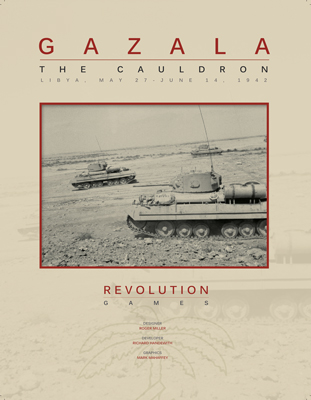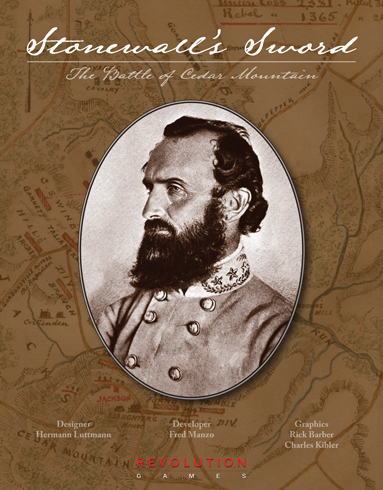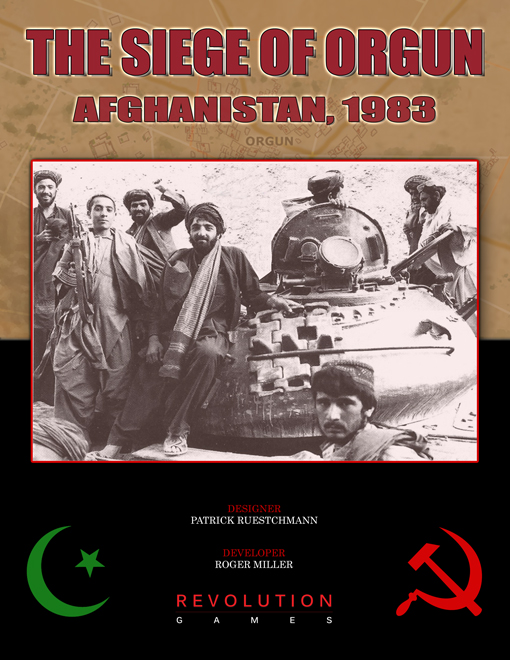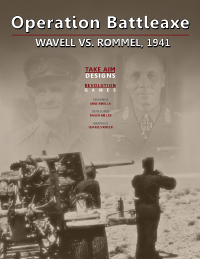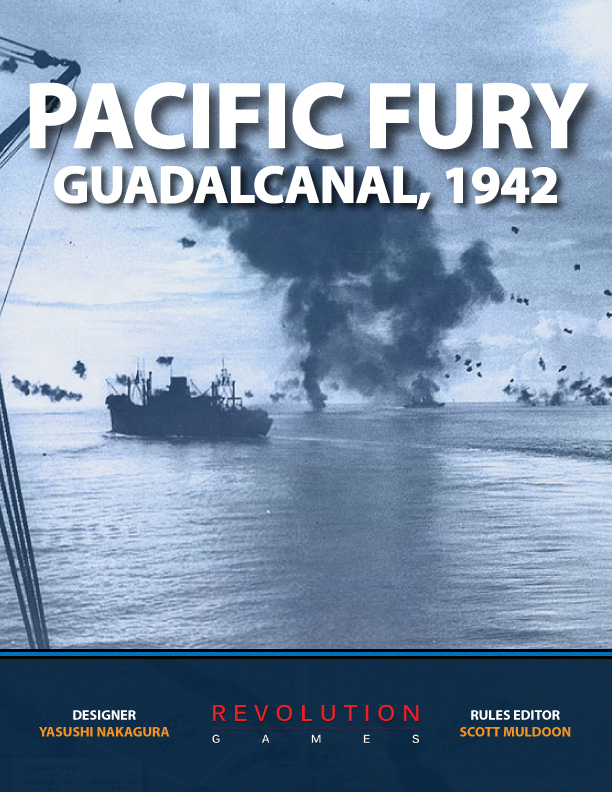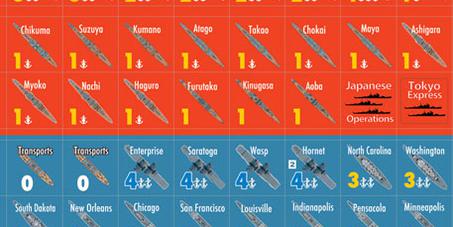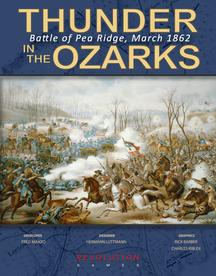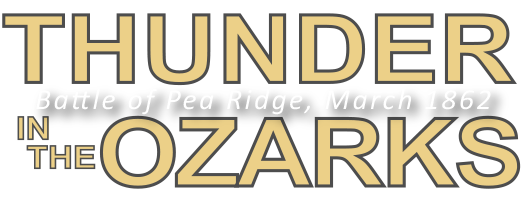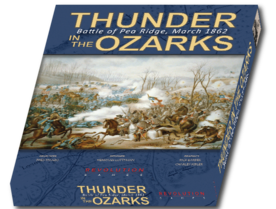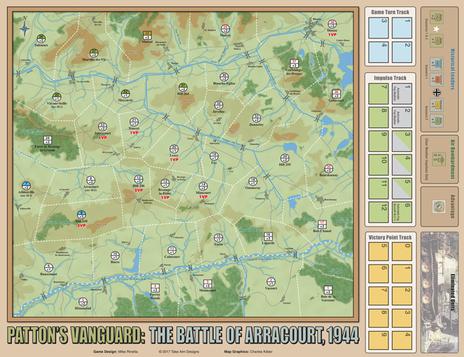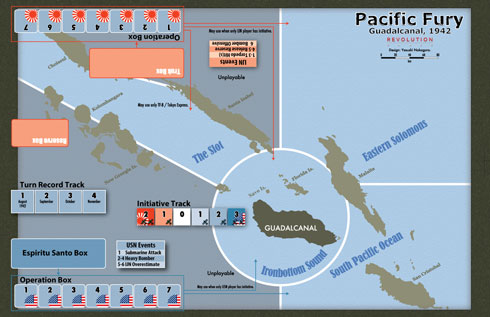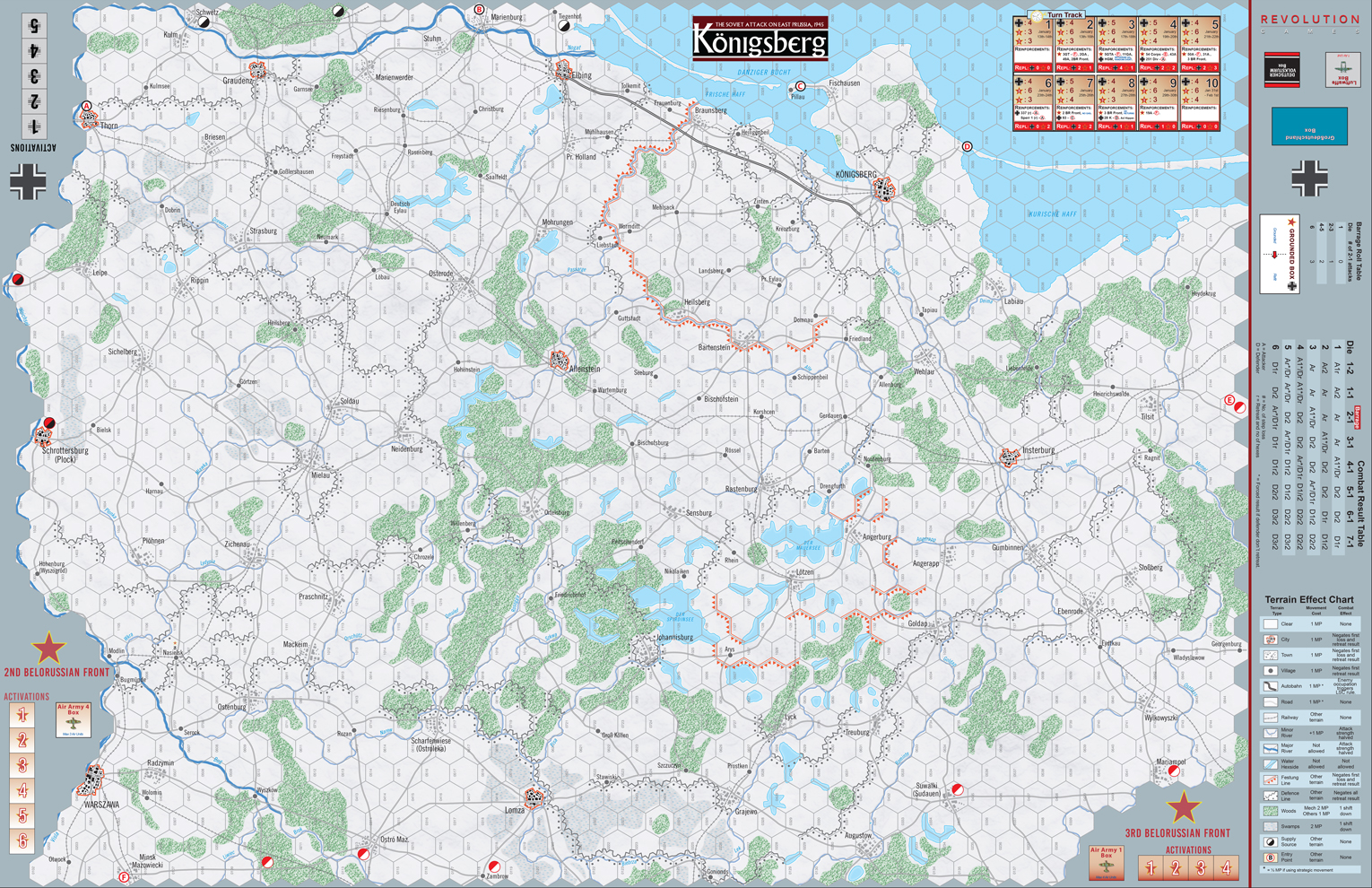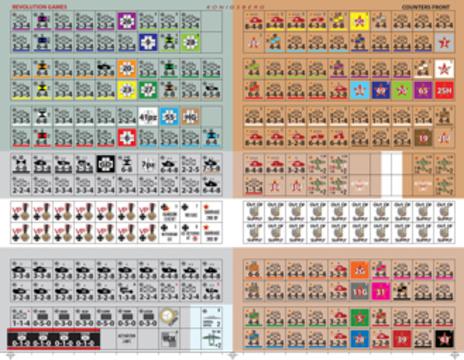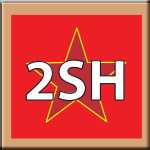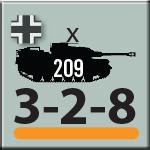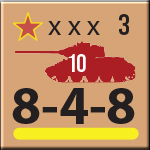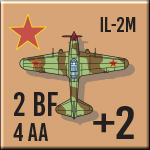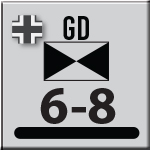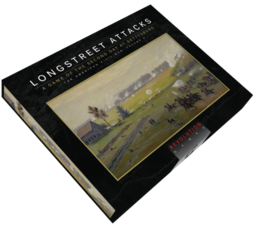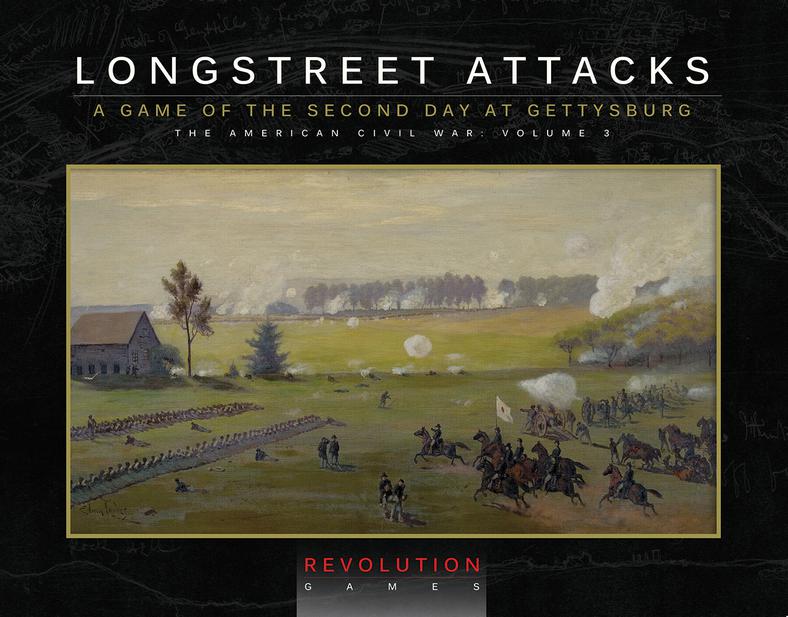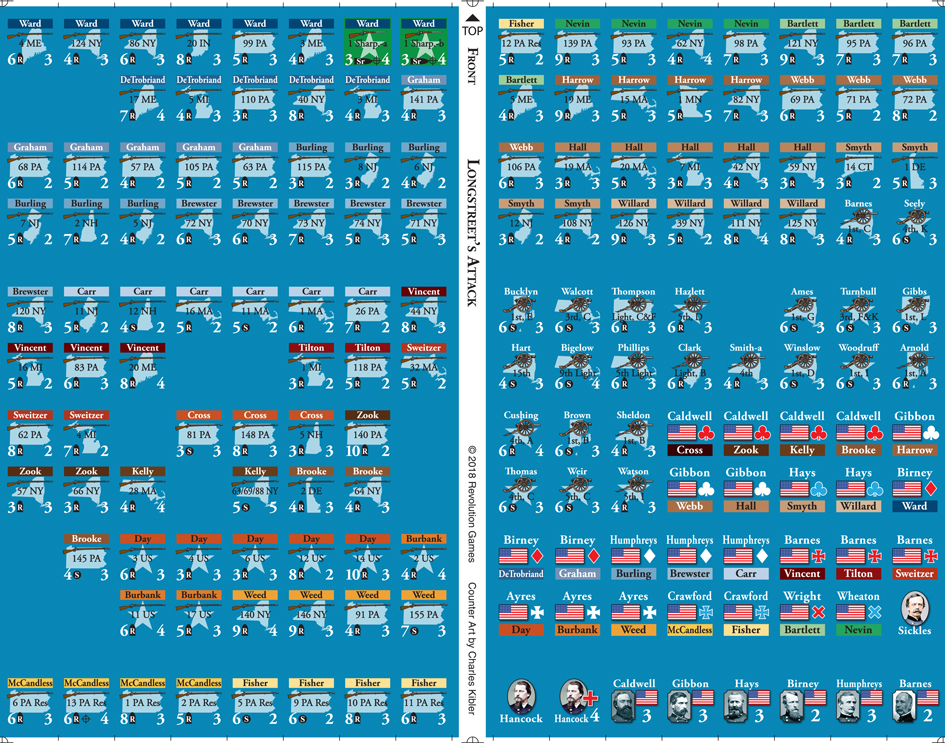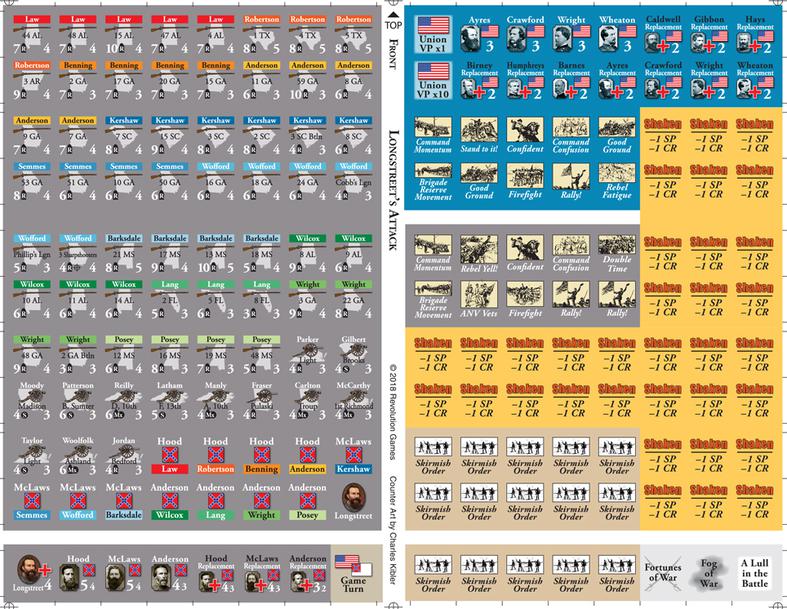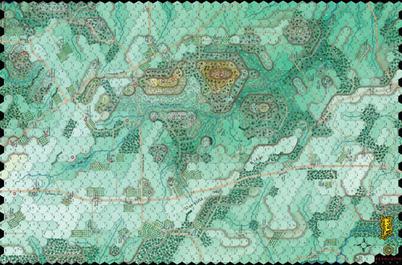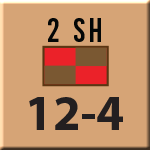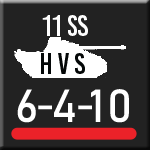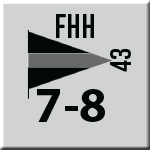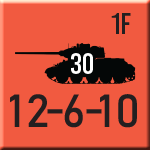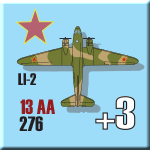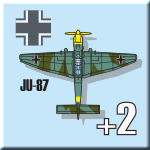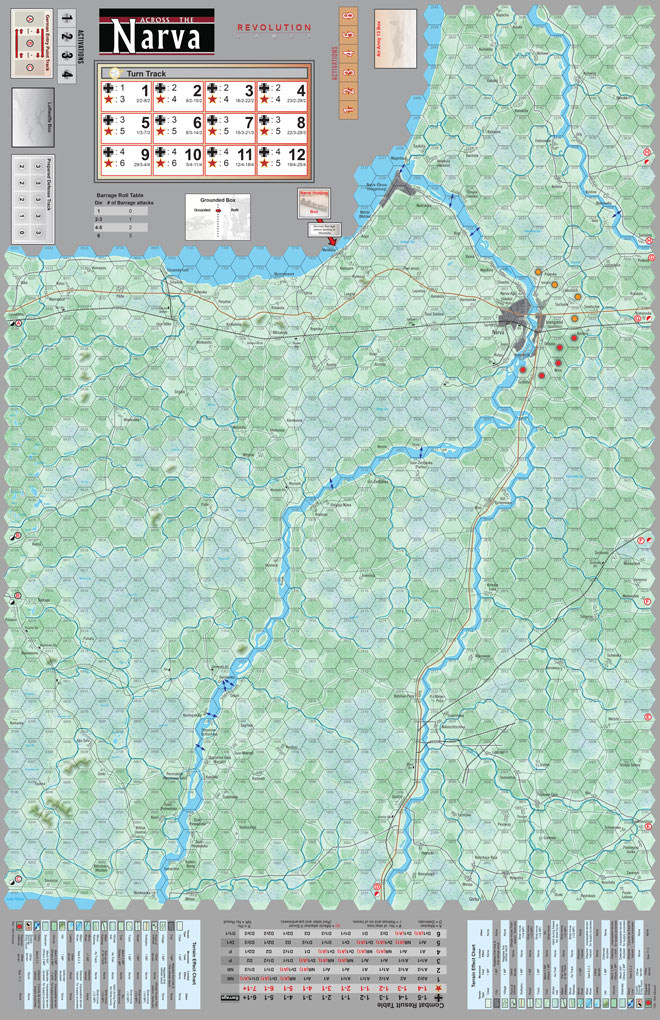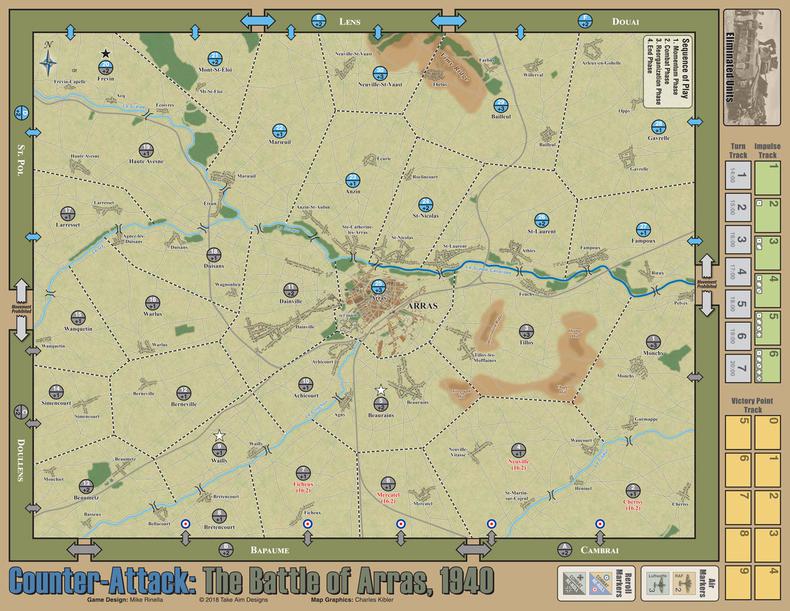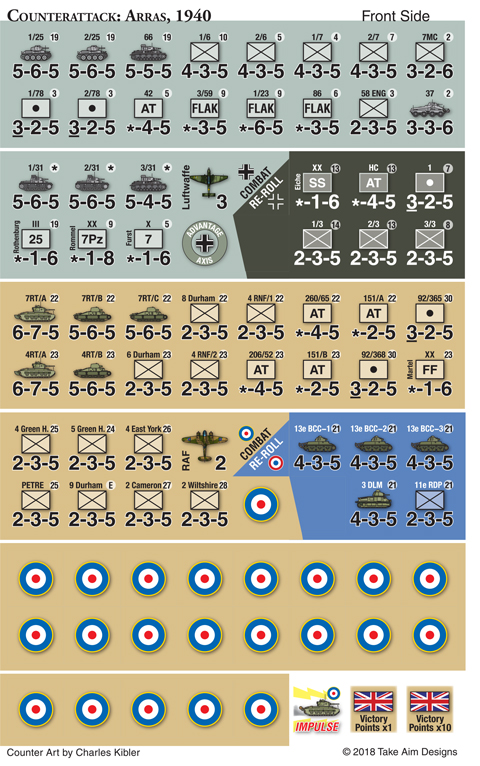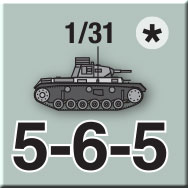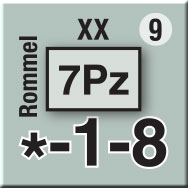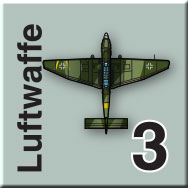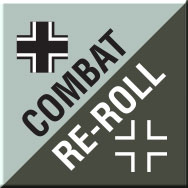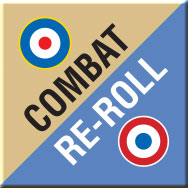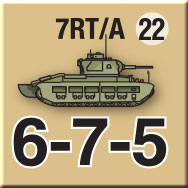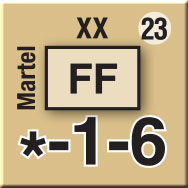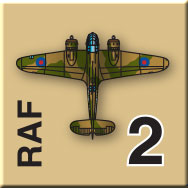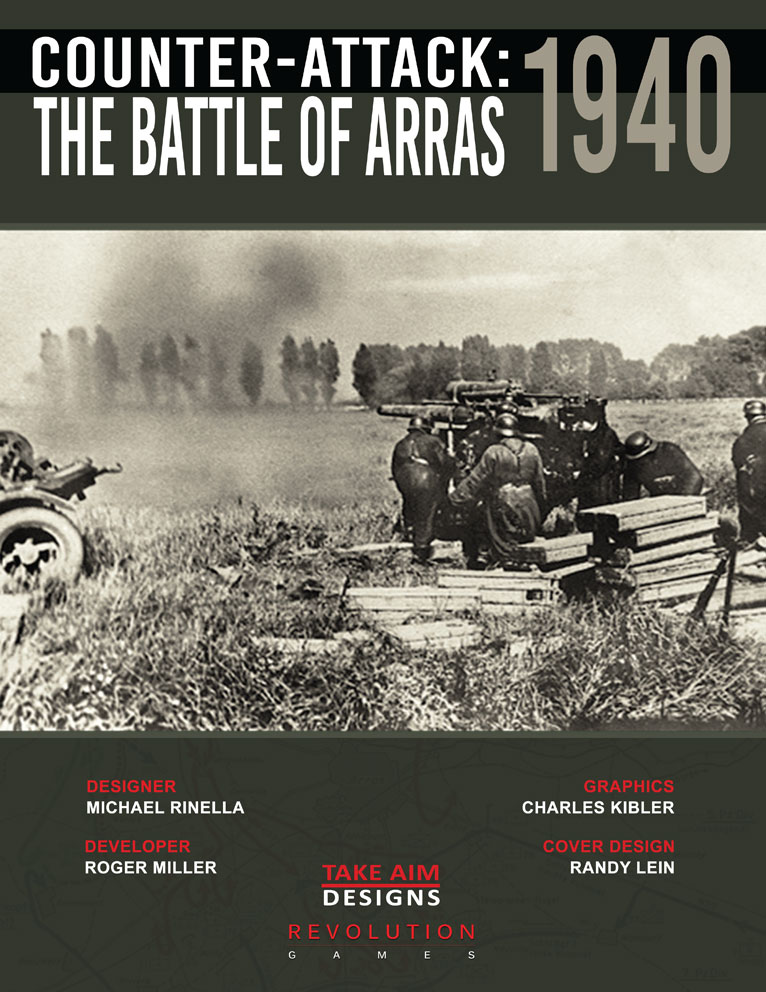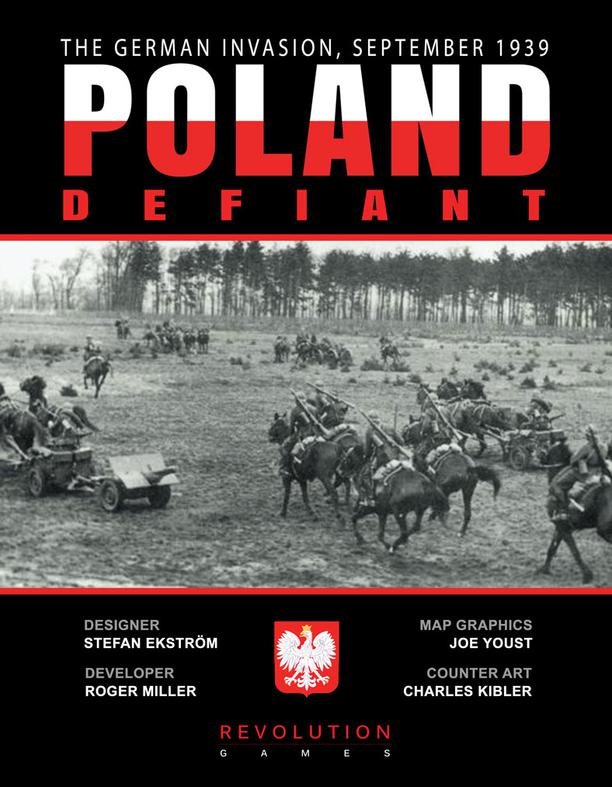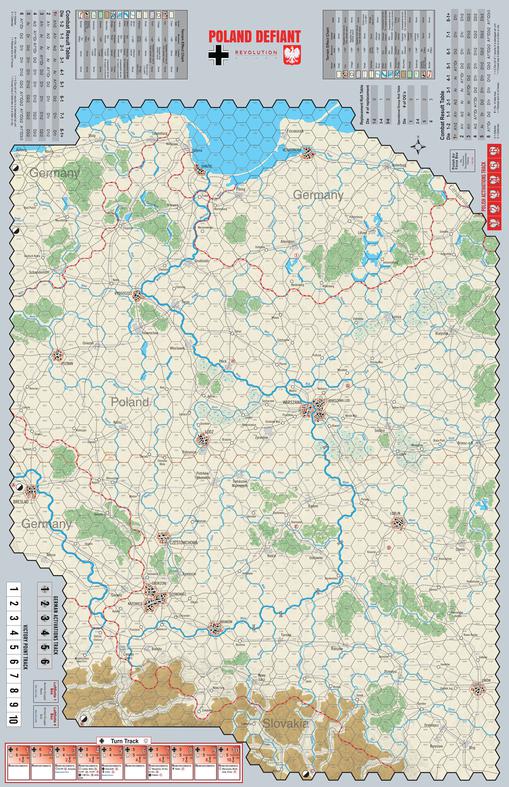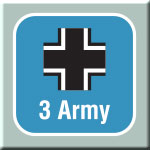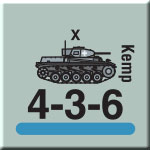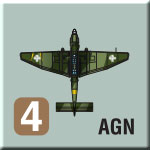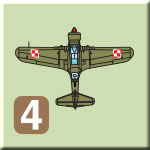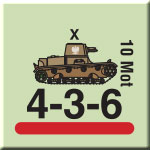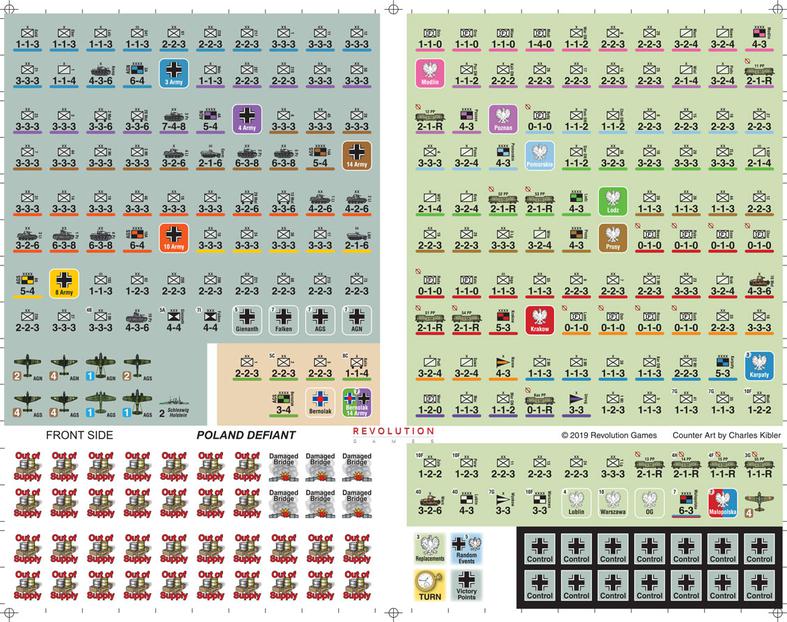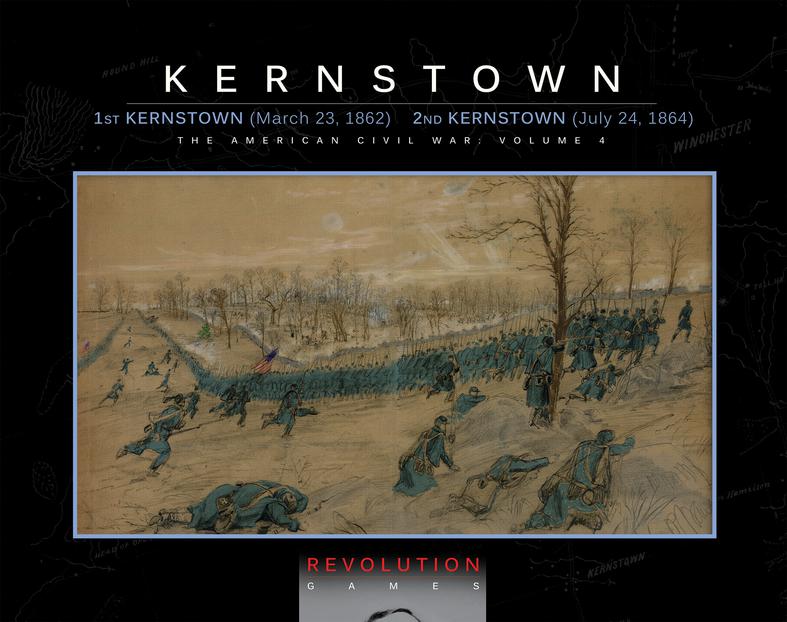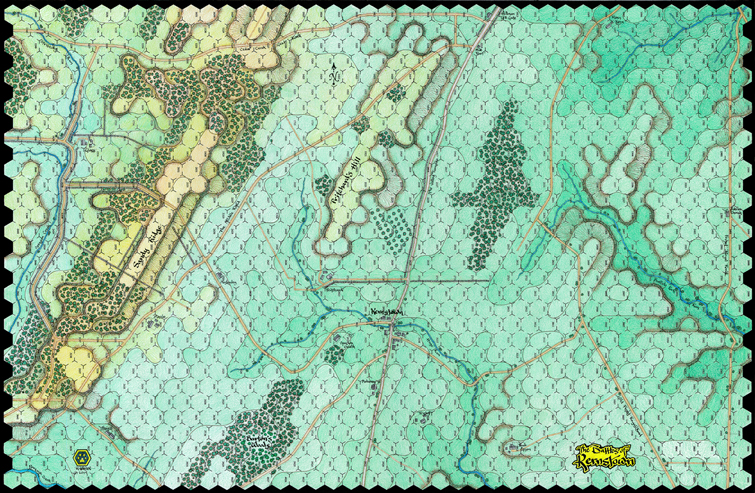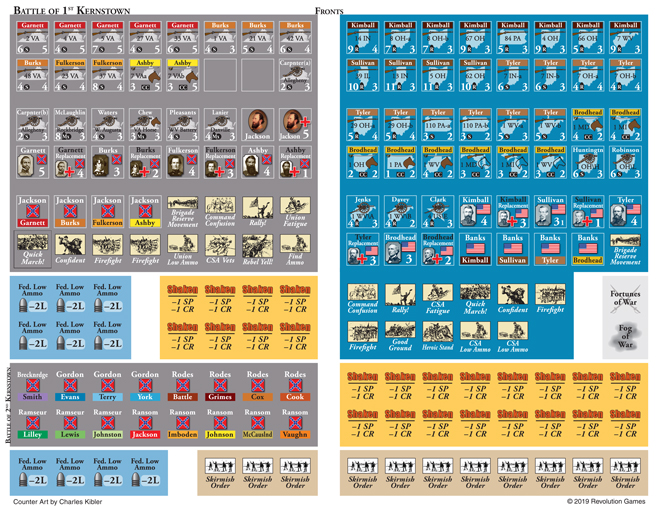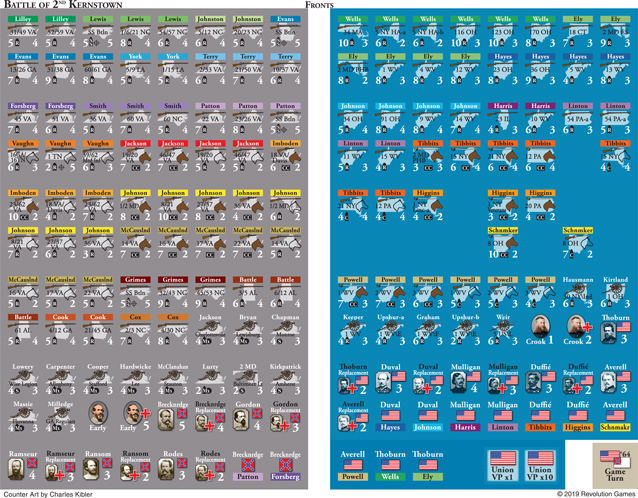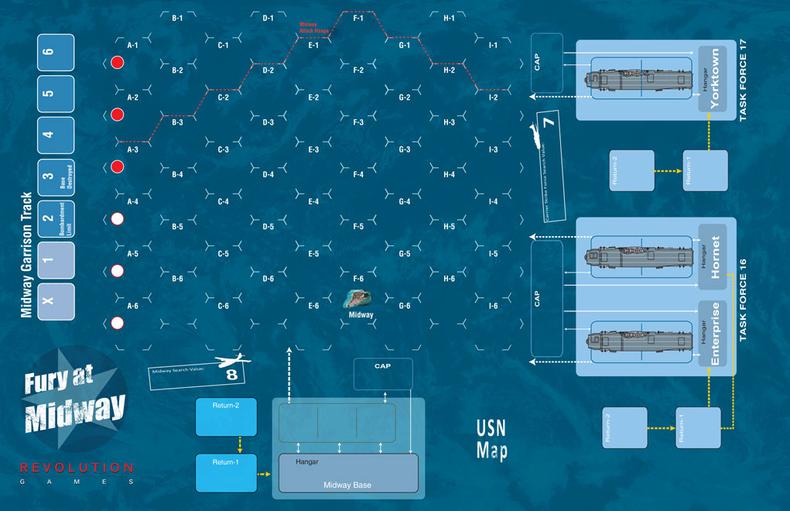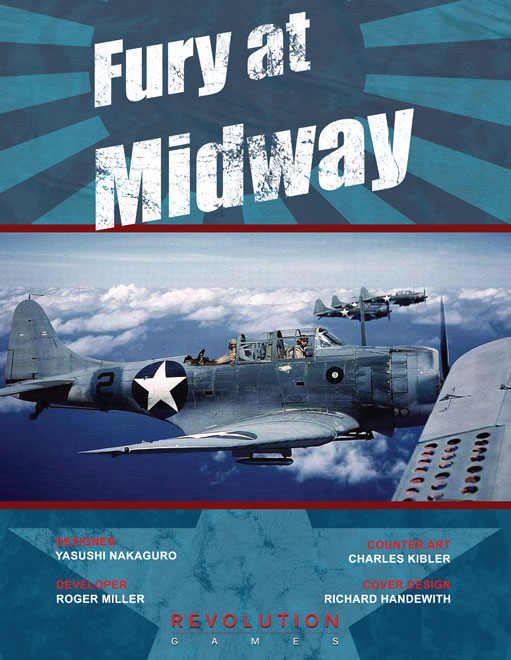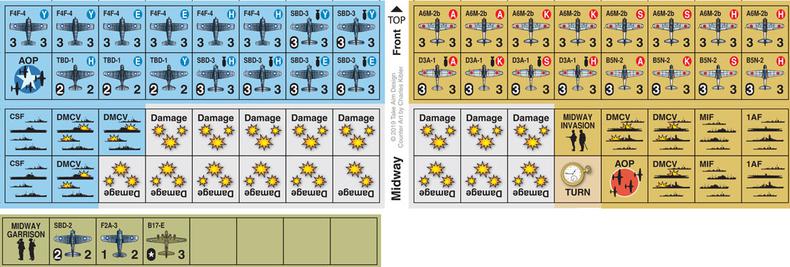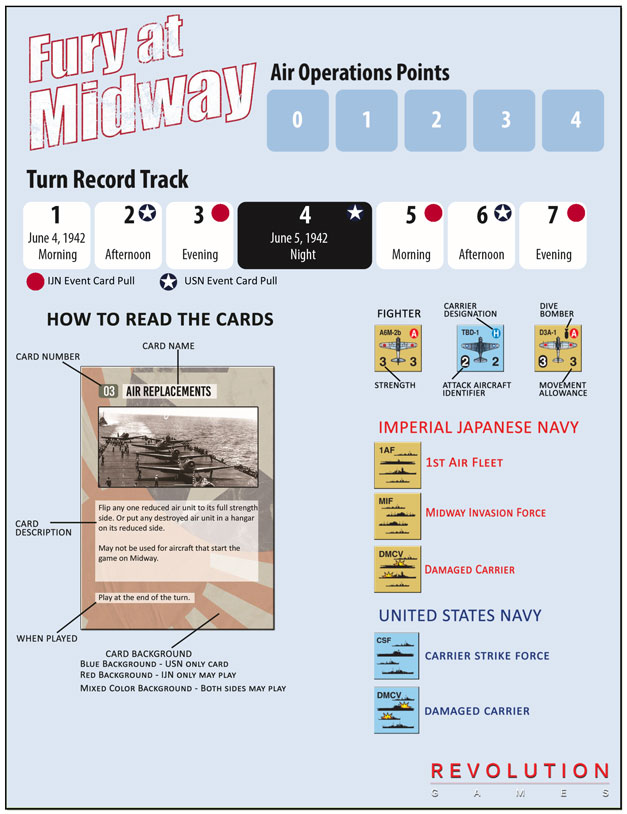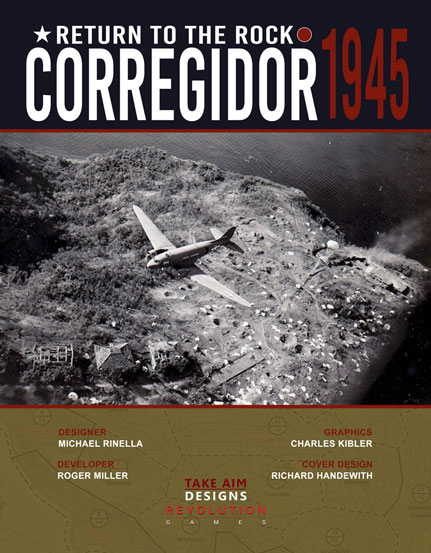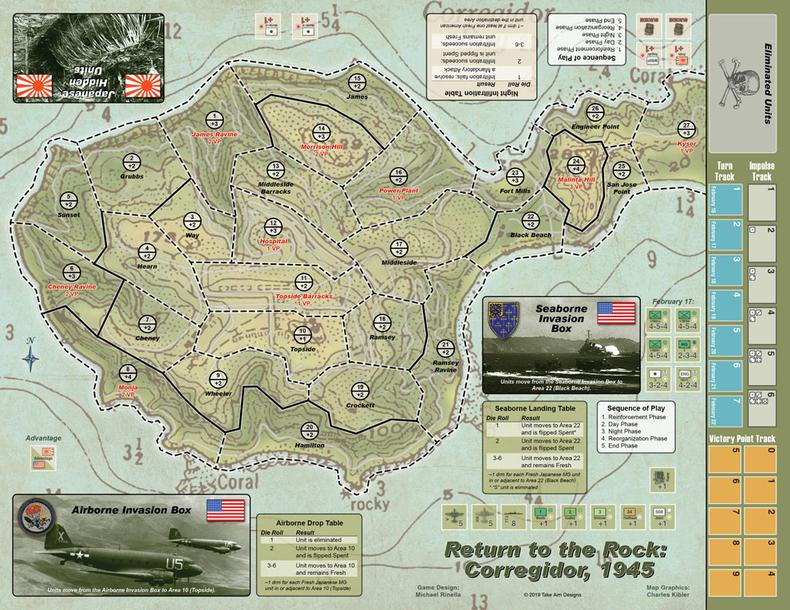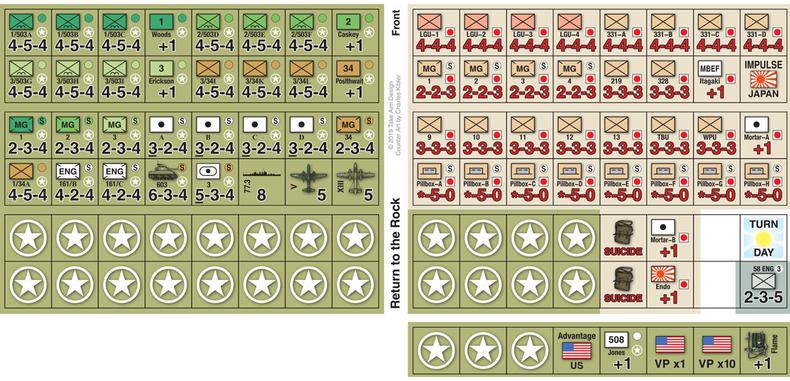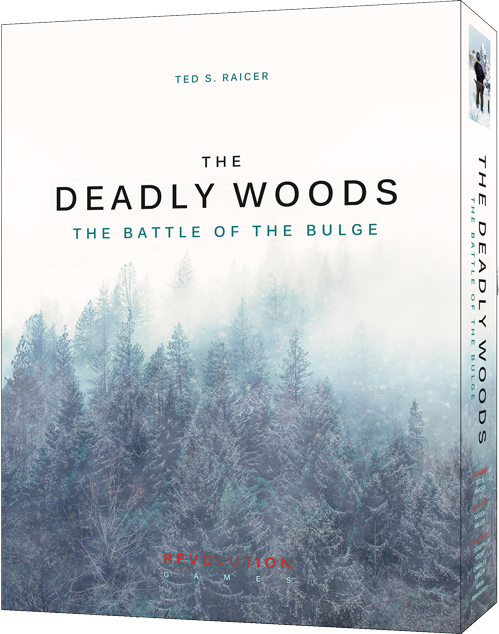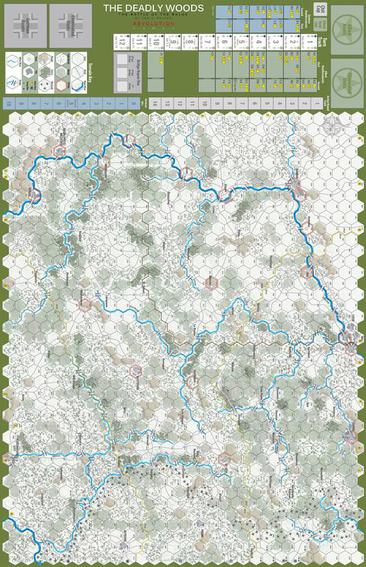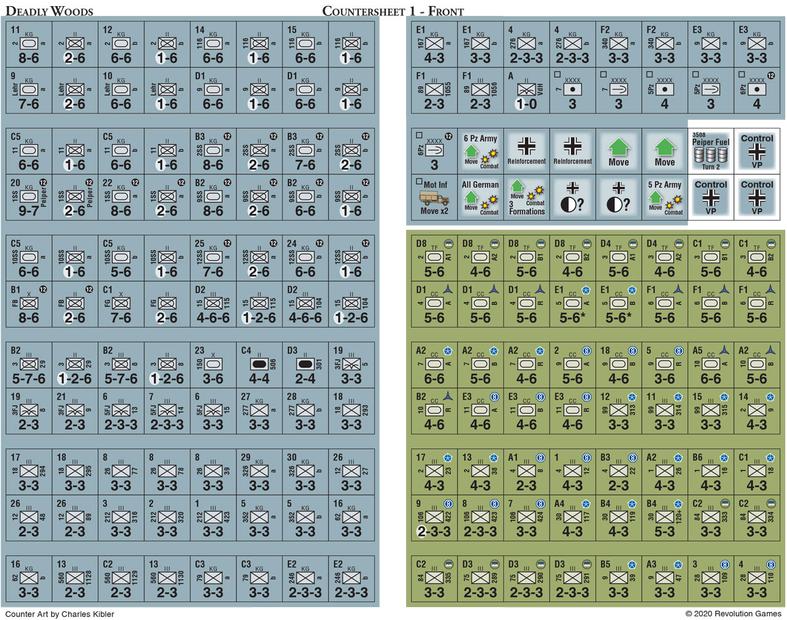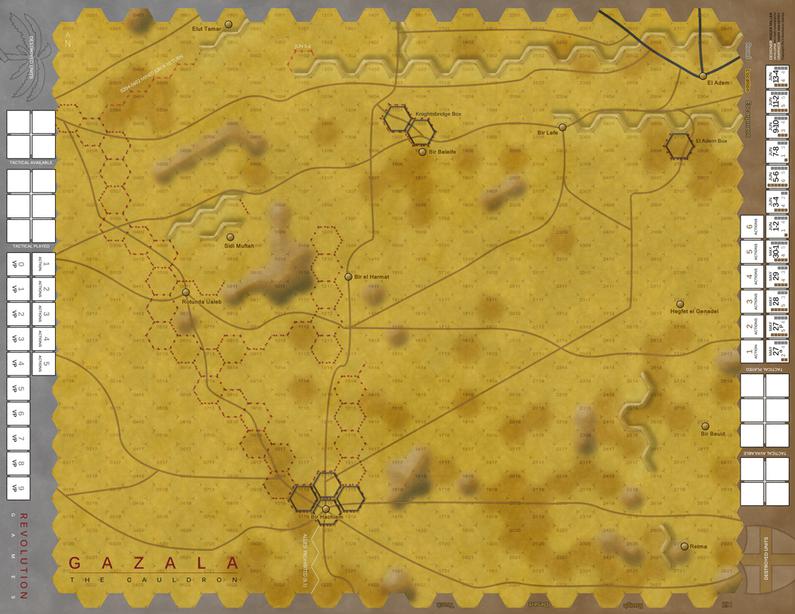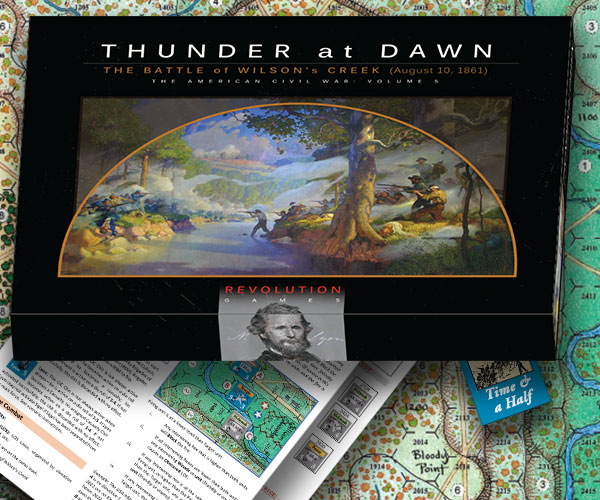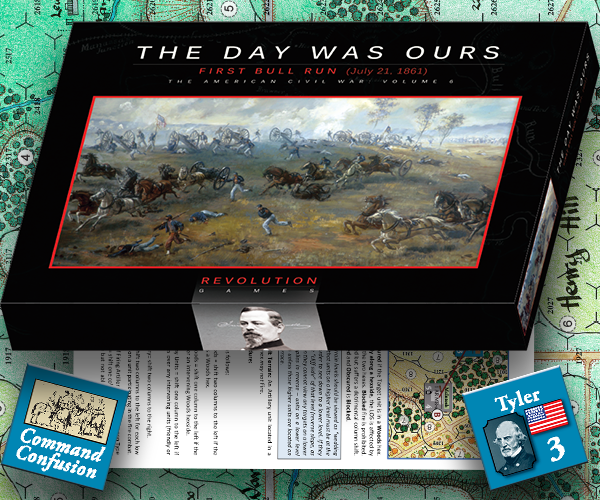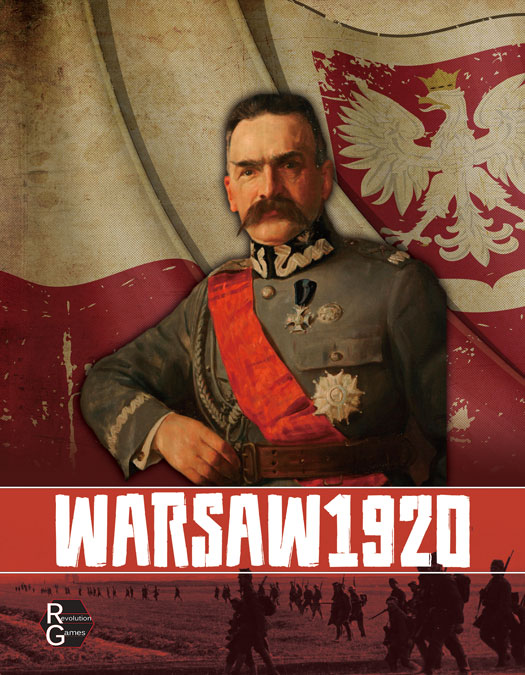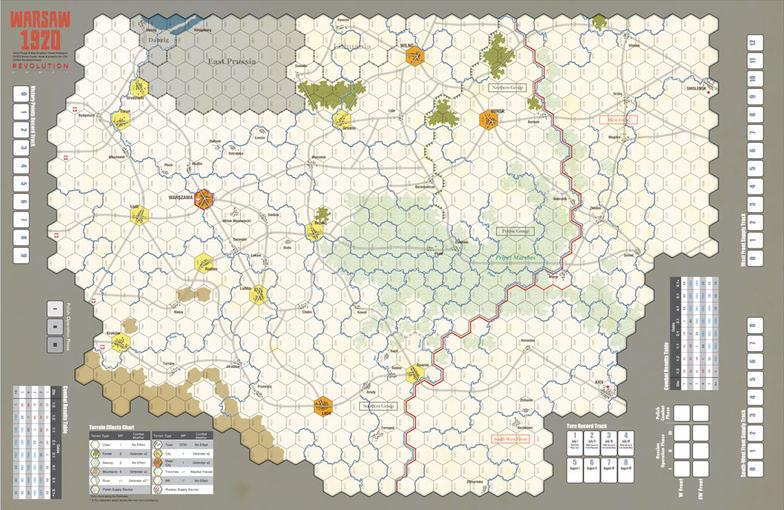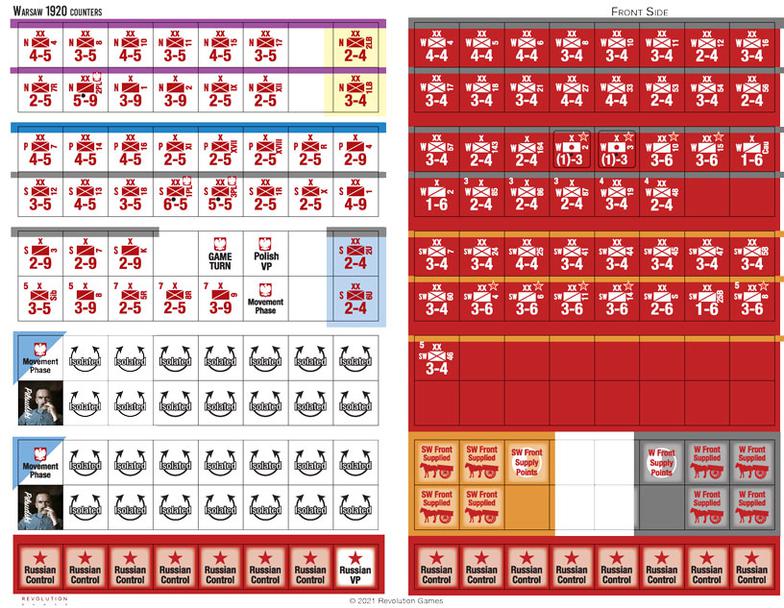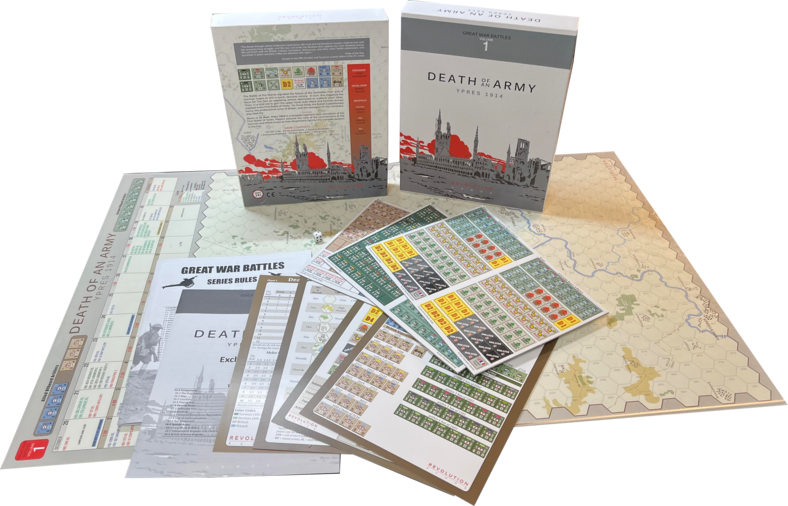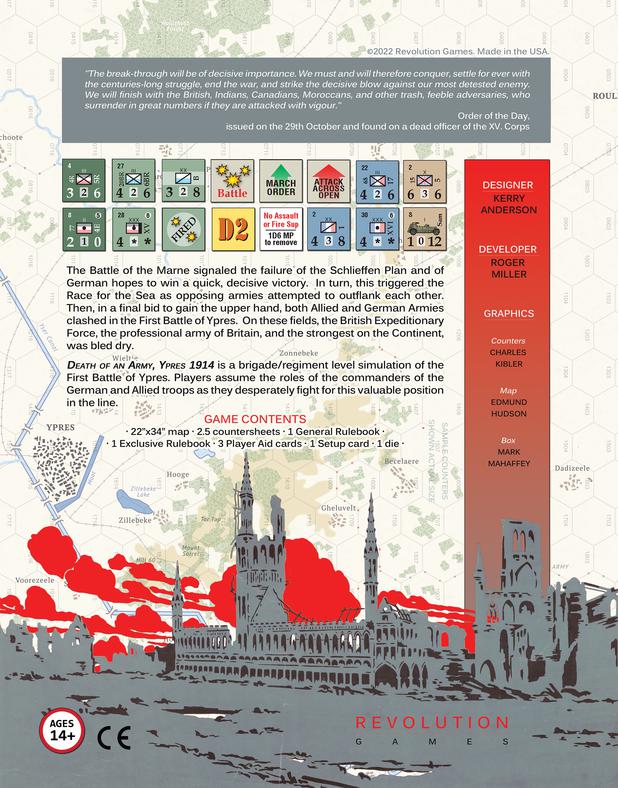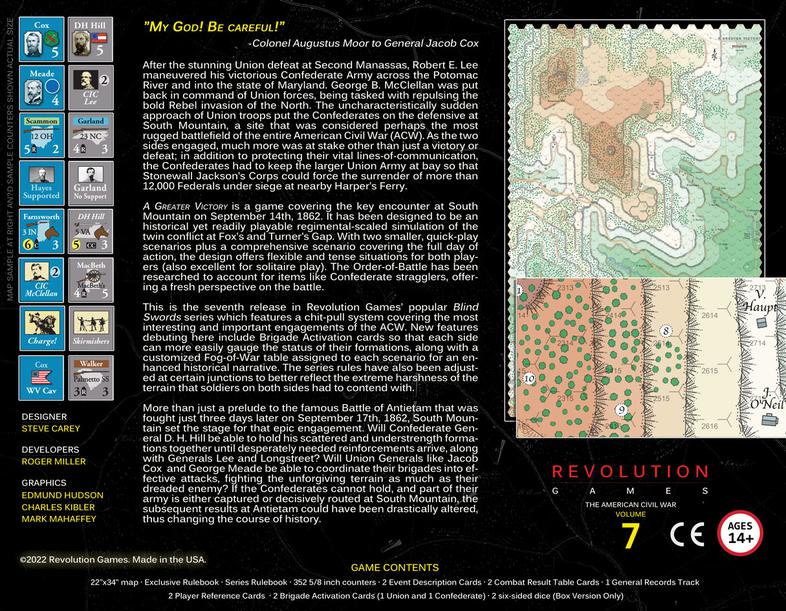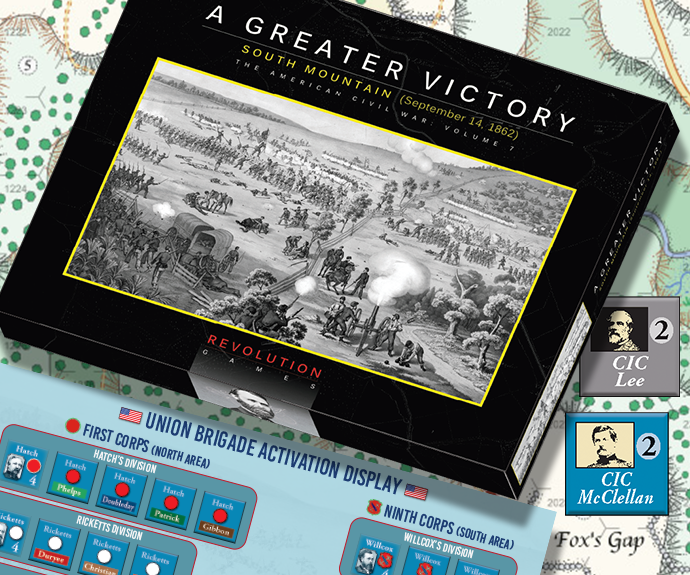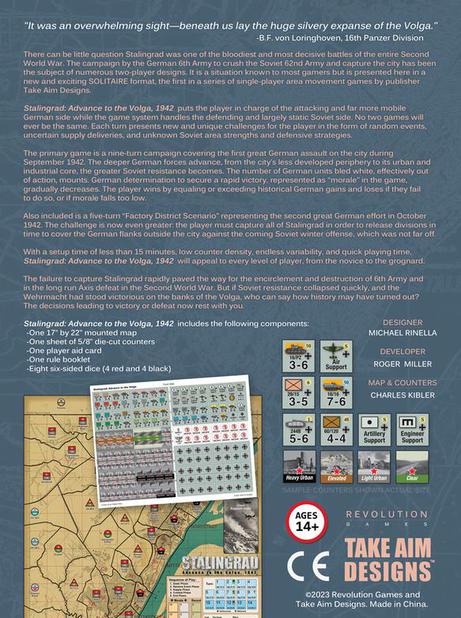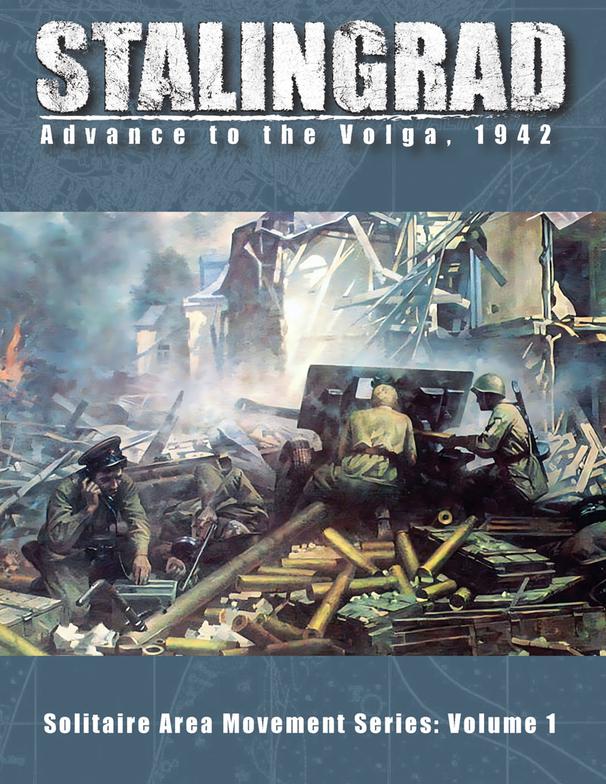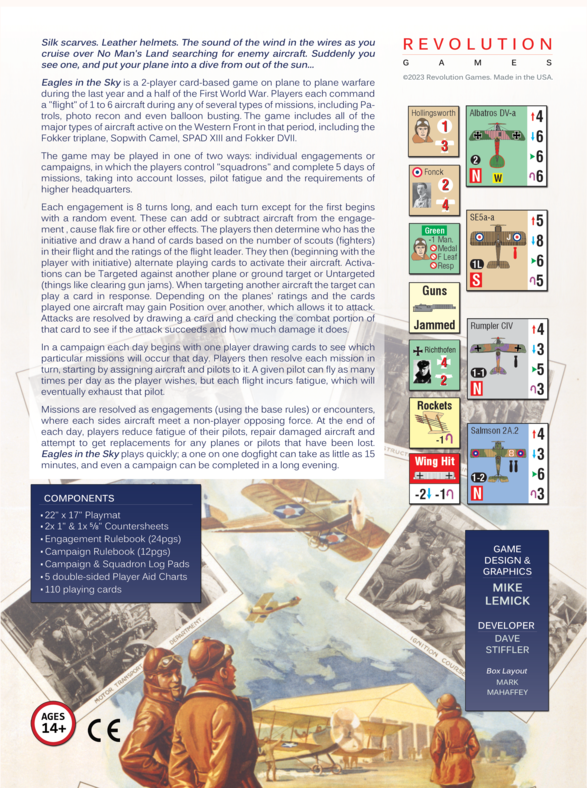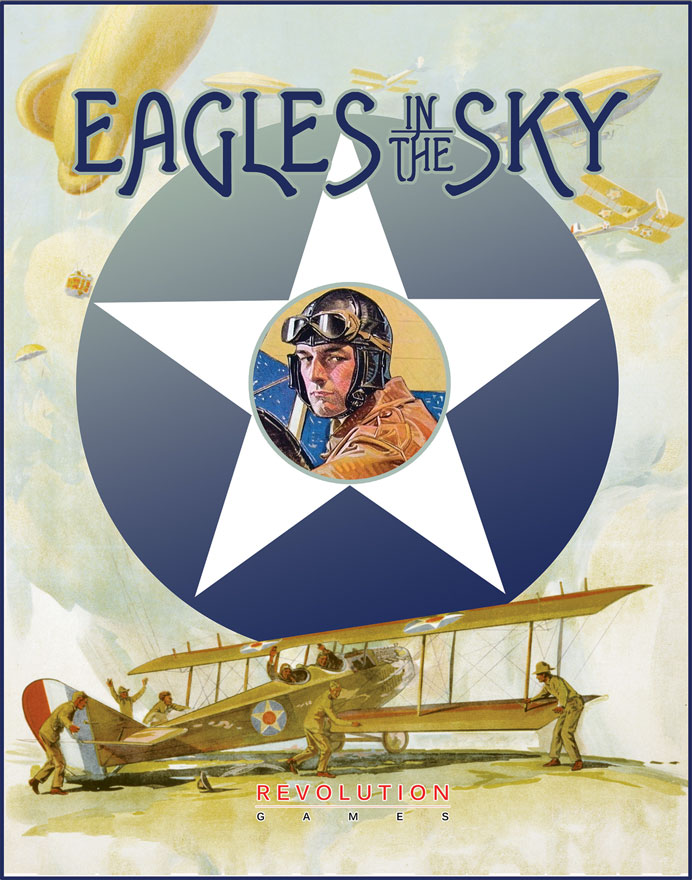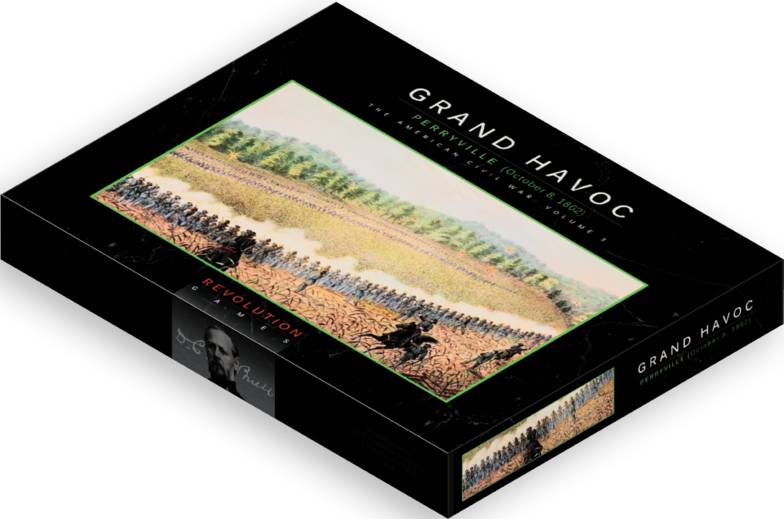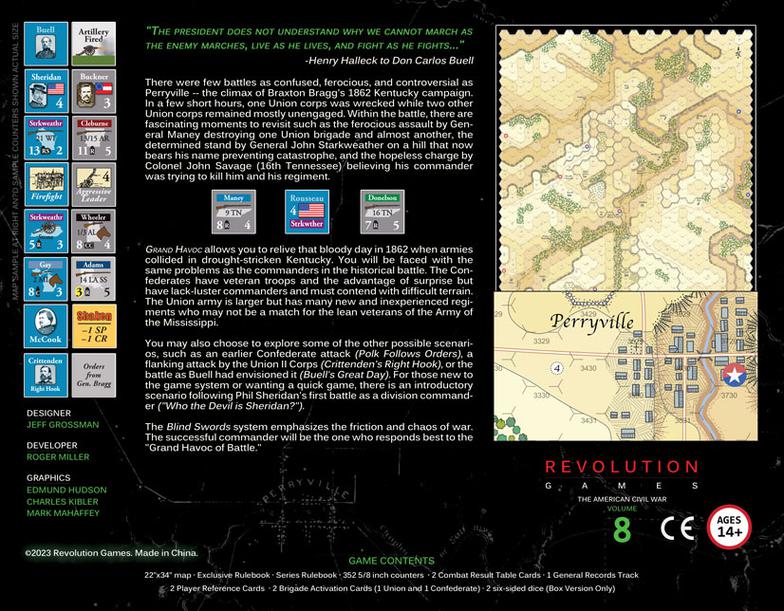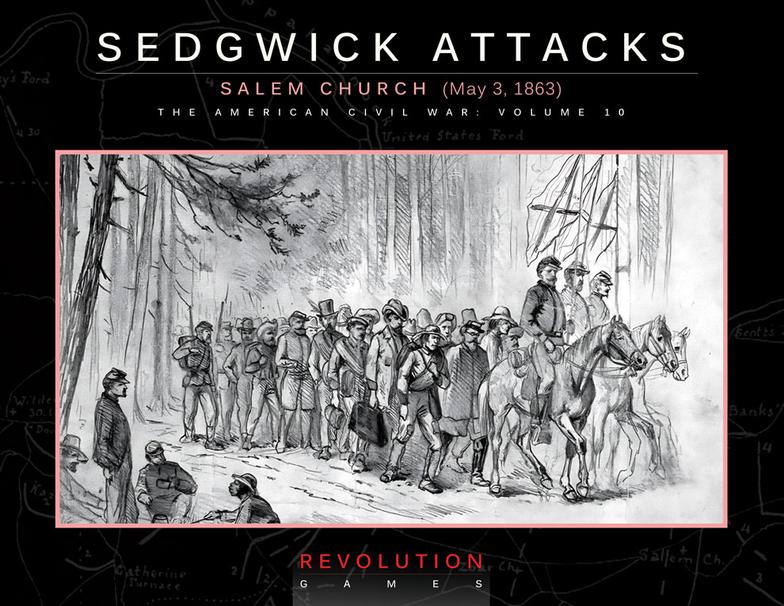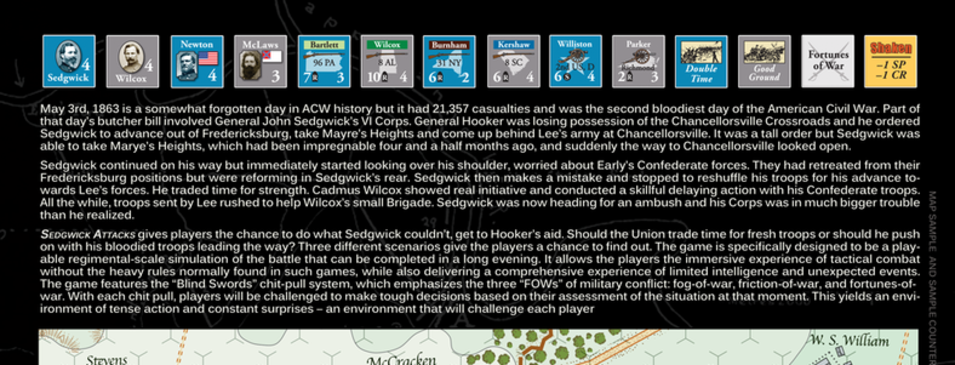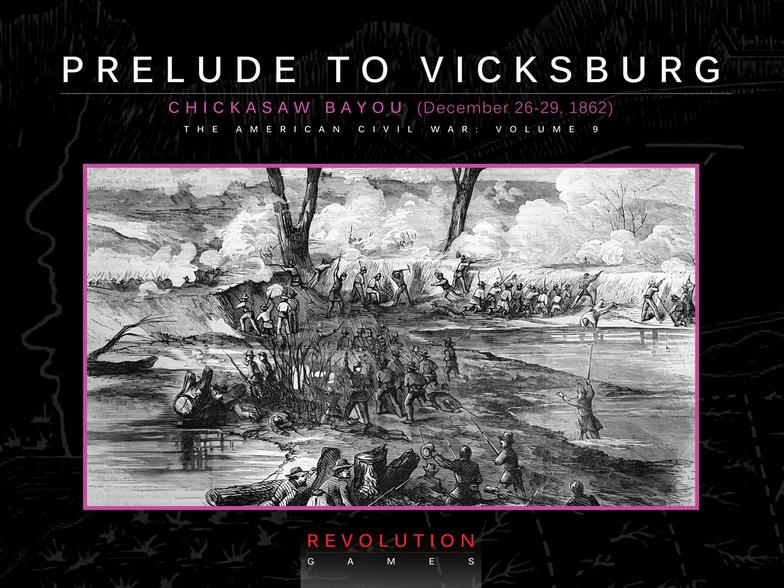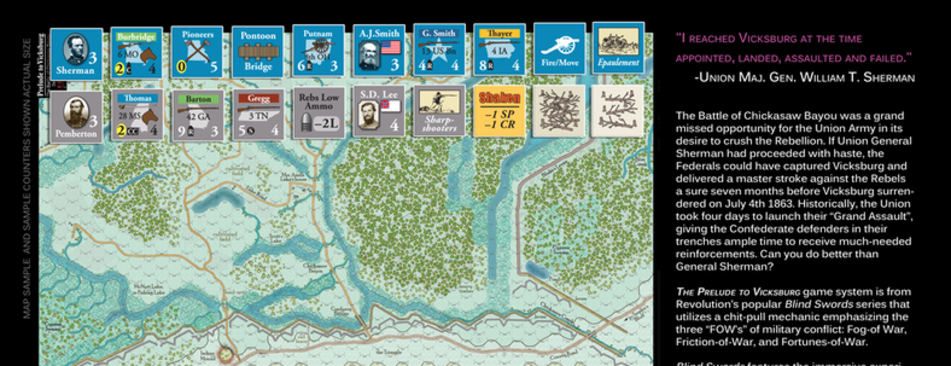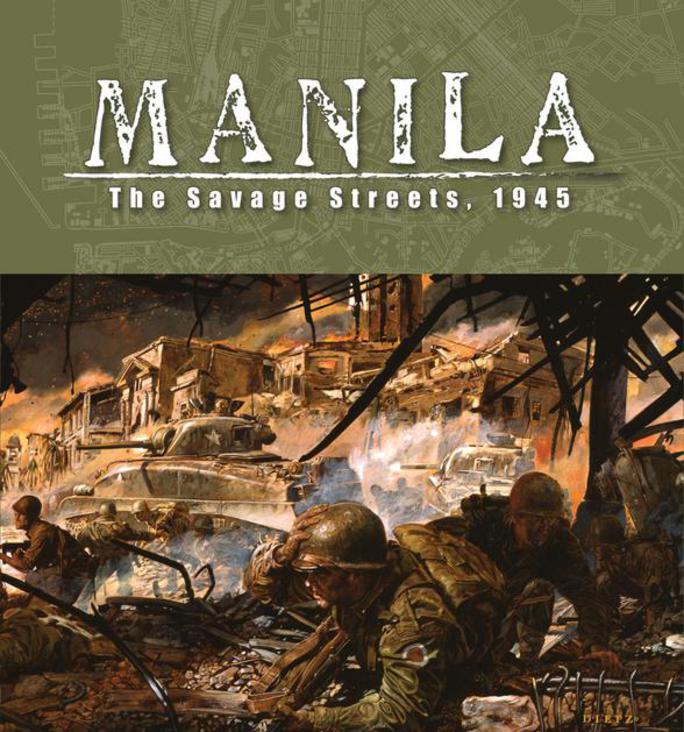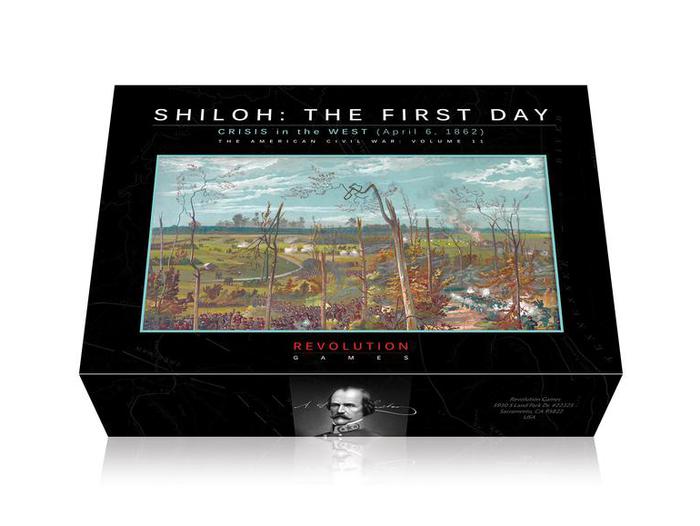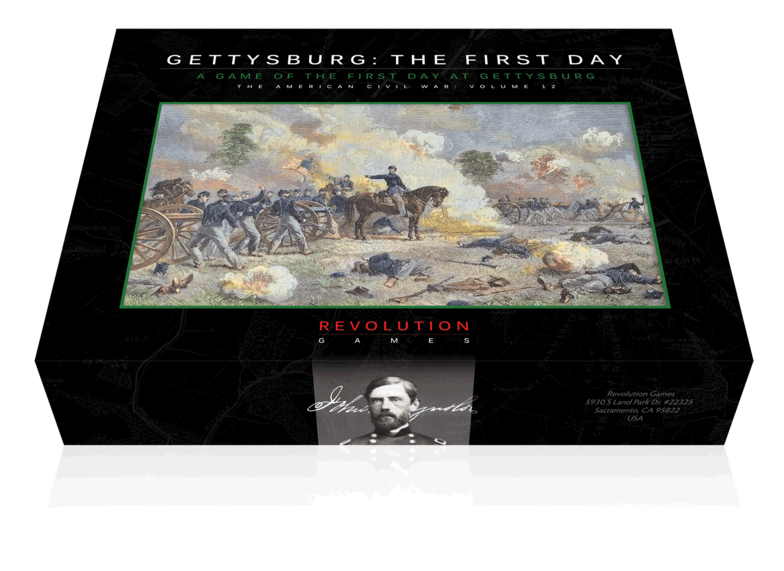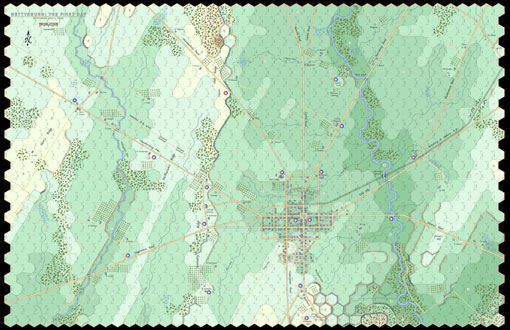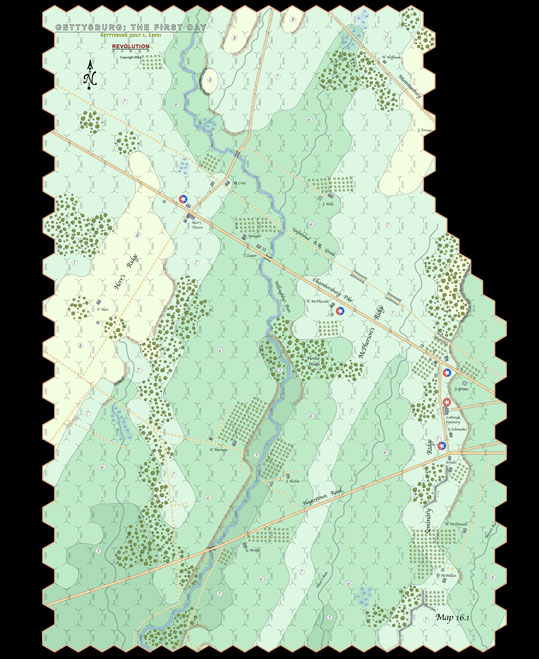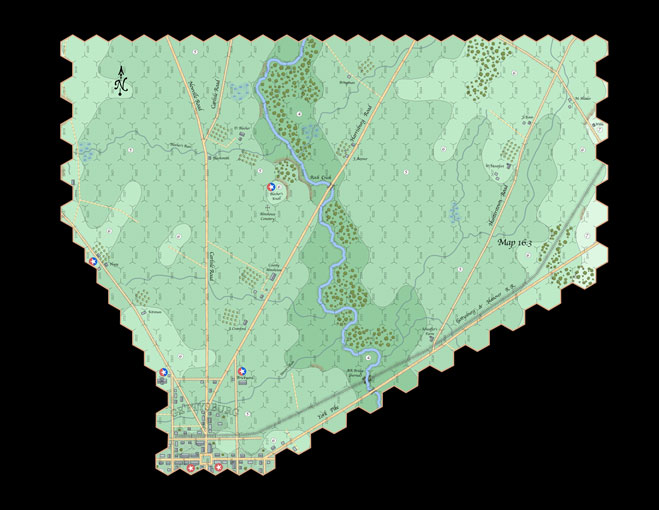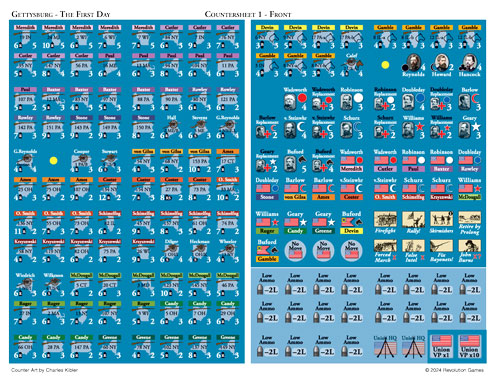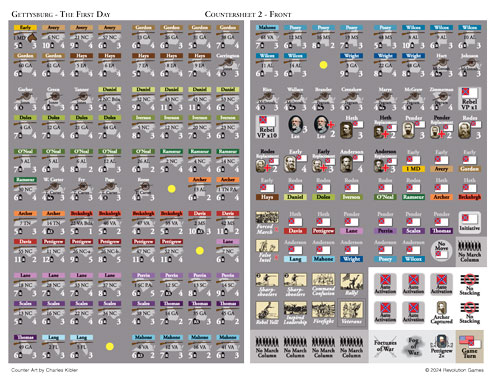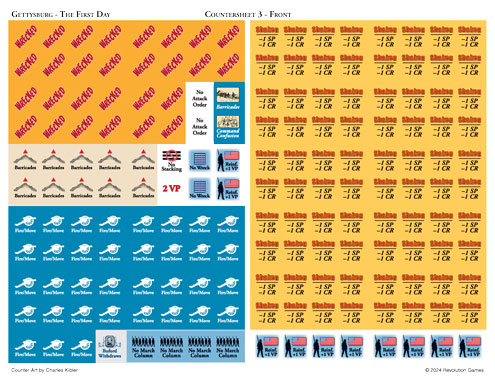©2024 Revolution Games, All Rights Reserved.
Battles of the Bulge: Celles
Celles is a fast moving simulation of the fighting at the high watermark of the German Ardennes offensive, AKA "The Battle of the Bulge". The Germans are advancing towards the Meuse River and are running out of fuel and time to force a desperate crossing to achieve Hitler's goal of ultimate "Victory". The Allied forces are both trying to block the German advance and begin a counter-offensive to destroy the German Panzer Divisions.
Alternating random activation by formation provides players with uncertainty and excitement. Each turn, players receive a varying number of activations (not all formations may move and some may move more than once!) to represent fuel shortages, aggressive generalship, command uncertainty, and piecemeal reinforcements that provides players with a rich historical feel. After units move, strengths are reduced to simulate fatigue and lack of defensive preparation. This is a game for players who love to counter-attack!
Designed by Roger Miller
Game Components:
The game consists of the following components:
1 - 22 x 17" full color map of the battle (3/4" Hexes)
88 - full color 5/8" die-cut counters
8 Page Rule Booklet
1 - Player Chart
Ziploc Bag
Game Scale:
Map: 1 Mile per hex
Time: 2 turns per day
Units: 1 to 3 battalions per unit
Turns: 8
Play Time: 3 Hours
Players: 1 or 2
Solitare Suitablity: High
Celles After Action Report - read here
Checkout update on errata and common questions here.
Gazala: The Cauldron
Game Components:
The game consists of the following components:
1 - 22 x 17" full color map of the battle (3/4" Hexes)
168- full color 5/8" die-cut counters
12 Page Rule Booklet
1 - Player Chart
Ziploc Bag
Gazala: The Cauldron simulates the mobile portions of the battle of Gazala south of Tobruk between May 27 and June 14 1942. An Axis attack was met by a furious Allied counter-attack which then developed into a grinding battle of attrition and maneuver that finally ended in massive Axis victory.
Alternating random activation by formation provides player with uncertainty and high re-playability as no two games will be alike. Each turn player receive a varying number of activations to represent the supply levels, command confusion, fatigue and intelligence of their armies and this leads to an ebb and flow to the battle as each side is dominant at different times. After units move, strengths are educed to simulate fatigue and lack of defensive preparation making counter-attacking key to the game. Minefields, airpower, anti-tank abilities and the armor versus infantry conflict are all modeled in a simple and effective set of rules.
There are two scenarios with a playing time of 3-7 hours.
Final Cover Art
Celles Rules now in French. Download here.
A nice AAR after from one of our customers. Read Here
Marco Reviews Gazala
Extras
Game Review by Fred Manzo
Vassal Module (1.3)
New!
Orgun, Afghanistan 1983 - a strategic valley in the Paktika Province close to the Pakistan border. A large group of Mujahideen (800 strong) assaults fortified positions, including an airfield and a 19th century fortress, protected by a regiment of the Afghan Army reinforced by Soviet forces.
Game Mechanics
Area-Impulse system: fast and well-known combat resolution and activations. Interactive play with limited downtime between players. This is a card-assisted system for the element of surprises, helping to fit in the historical events into the game (soviet counselor, night assaults, radio jamming...). Low counter density. Minimal usage of markers.
Cover Art
Designer: Patrick Ruestchmann
On the stifling hot morning of August 9th, 1862, Maj. Gen. Thomas “Stonewall” Jackson’s corps of Confederate veterans encountered a lone Union division under the shadow of Slaughter’s Mountain (also known as Cedar Mountain). The isolated Union division belonged to Maj. Gen. Nathaniel Banks, Jackson’s rival during the Valley Campaign and an opponent who the great Stonewall had consistently defeated. The Confederate troops were some of the best in the Rebel army, they outnumbered the Union force and were under the command of one of the iconic generals of American history. What could possibly go wrong?
Stonewall’s Sword: The Battle of Cedar Mountain is a medium-sized wargame (176 counters and a 17” x 22” map) that allows you to explore the reasons why things almost went horribly wrong for the Confederates that day. The map scale is 140 yards/hex and each unit counter represents an infantry regiment or artillery battery. The game system features the Blind Swords chit-pull mechanic, which thrusts players directly into the fog-of-war of an American Civil War battlefield. Players are never quite sure of when formations will activate – neither the enemy’s units nor their own! Event chits, each tailored to the conditions that existed at the battle, provide players with opportunities to create out-of-sequence attacks, rallies and a myriad of other actions. Players are thus constantly challenged with each chit-pull to produce a plan of action that will best exploit the current circumstances on the field. This unpredictable player interaction creates not only an exciting gaming environment but also accurately simulates the confusion, intensity and unusual circumstances of the Cedar Mountain battlefield.
The game system also features a simple Brigade Orders mechanic that forces players to assign activated brigades one of four orders – Attack, Defend, Maneuver or Regroup. The assigned order sets the parameters for the activated units and dictates how they can move, what type of combat (if any) they can perform and if they can rally. This establishes the “tone” for the units in the upcoming turn and reflects the effects of command orders without the need for complex rules or order writing.
In addition, certain “what-if” options have been included, allowing the Union player to possibly get Ricketts’ Division to arrive sooner than it did historically or the Confederate player to have Jackson snap out of his “stupor” earlier in the day. Both of these possibilities can be influenced by the players through the allocation of their Command Event chits.
Stonewall’s Sword attempts to be a unique gaming experience – one that elicits a fun gaming experience in unison with a realistic representation of the Battle of Cedar Mountain. We hope you agree.
Designed by Hermann Lutmann
Components:
1 - 22"x17" full color map (3/4" Hexes)
176 - Die Cut 5/8" counters
24 page Rule Booklet
5 Player Charts
Ziploc Bag
6/24/15 - Check out Stuka Joe's playthrough part 1 of Battles of the Bulge: Celles
7/6/15 - Part 2 of Stuka Joe's playthrough of Battles of the Bulge: Celles
Celles Rules now in Spanish. Download here.
Components:
1 - 22"x17" full color map
88 - Die Cut 5/8" counters
36 - Player Cards
12 page Rule Booklet
2 Player Charts
Ziploc Bag
Celles Rules now in English. Download here.
$70
Siege of Orgun AAR by Dana Mongoven
Operation Battleaxe is a quick-playing depiction of the June 1941 Allied offensive in the North African desert. The Allies posses more tanks, including the "Queen of the Desert" the Matilda, and have mastery of the air. Crossing the Egyptian border into Libya, their mission is simple: destroy the Afrika Corp, and lift the siege of Tobruk! The Axis forces in the path of the Allied advance occupy well-prepared strongpoints, and lurking somewhere behind them are the German panzers - and Rommel, "The Desert Fox." The next three days of battle will decide the course of the war in the desert for months to come.
Utilizing a new streamlined version of the "area-impulse" system players will experience the uncertainty of the desert battlefield. Each turn will contain a variable number of impulses, and both players will be challenged to determine if it is better to attack first, or defend then counter-attack. Having committed one's infantry and armor to battle, artillery support may or may not be available. To win the Allied player must exploit his numerical edge in armor or artillery, plus airpower, to capture Axis positions and destroy German units. The Axis player must exploit his greater speed, operational flexibility and superior battlefield recovery, to recover lost ground and destroy Allied units. Fast, furious, and chess-like, this is a game for players who love concentrated action!
Designed by Mike Rinella
Components:
22 x 17" full-color map
88 5/8" die-cut counters
12 page rule booklet
ziploc bag
Cover Art
Originally published in Japanese by Bonsai Games, Revolution Games brings Pacific Fury to the English speaking world.
Pacific Fury is a fast playing simulation covering the Solomons campaign in the South Pacific from August to November 1942. Pacific Fury is a game for two players: one controls the Japanese forces and the other controls the US forces (including RAN ships). The game starts on 7th August 1942, after the US Marines 1st Division landed on Guadalcanal and occupied the airfield there.
The game system features an abstract semi-hidden area movement system where both players must determine the timing and size of task forces during an operation. The American player starts with control of Guadalcanal, the Japanese must take it to win!
Play time is about 1 hour. Designed by Yasushi Nakagura
Components:
11 x 17" map
53 die-cut counters
8 page rule booklet
ziploc bag
Final Counter art (click for larger image)
Final Map Art (click for larger image)
Cover Art
CSW Customer review here.
Download Vassal Module
BGG Review here
Ziploc Edition
Boxed Edition
The Battle of Pea Ridge was a critical engagement fought on March 8th and 9th 1862 between the Confederate Army of the West under Major General Earl Van Dorn and the Federal Army of the Southwest under Brigadier General Samuel Curtis.
In the winter of 1861, the Confederate army in Missouri, then commanded by Major General Sterling Price, had been chased back into the Boston Mountains of Arkansas. The first drive on St. Louis had been repulsed and Van Dorn was summoned to take command of the force and launch a new offensive into the heart of Missouri. Van Dorn, an Indian-fighting cavalryman by trade, arrived at the Rebel camp and even though he was quite ill (due to a fall into a river) he immediately roused the troops. He proposed to launch an immediate attack, despite the freezing weather and fatigued state of his troops. Van Dorn force-marched the army north and managed to pull off a classic Napoleonic stratagem - the “maneuver sur la derrieres”. He placed his army astride the line of communications of his enemy and by any normal military measure this should have been settled the issue for the two armies. But by doing so at such an ill-advised time and at such an inhuman pace the Rebel troops were little more than a frozen and exhausted armed mob when they finally reached their positions.
Brig. General Sam Curtis was not a man to be intimidated and he realized that he had a fighting chance, even in this seemingly impossible position. Perseverance and hard, smart fighting by men like Colonel Grenville Dodge and others turned what looked to be a potential disaster into a grand victory. The Battle of Pea Ridge secured for the Union all of Missouri and the northern part of Arkansas, resulting in approximately 85,000 square miles becoming Federal-controlled territory.
This is the second game in the Revolution Games series of American Civil War games. The first game, Stonewall’s Sword simulates the battle of Cedar Mountain in 1862 and is available from Revolution Games.
Designed by Hermann Lutmann
2 - 22 x 17 inch maps
176 - 5/8 inch counters
24 Page Rule Booklet
5 - Player Charts
2 - 6 Sided Dice
Game Box
2 - 22 x 17 inch maps
176 - 5/8 inch counters
24 Page Rule Booklet
5 - Player Charts
Ziploc Bag
Download the VASSAL Module here
Spanish Language PDF Rules
Living Rules (Updated 7/26/15)
Errata (7/26/15)
$50
$60
Bonus Scenario download
Spanish Language Charts
Nice game review on BoardgameGeek
As the summer of 1944 drew to a close and Combat Command A of the American 4th Armored Division passed through the French town of Arracourt the war seemed all but over. It seemed as if nothing could stop the Americans from forcing their way across the German border and reaching the Rhine River. The weather, however, was rapidly deteriorating and Allied air reconnaissance failed to detect a counteroffensive by the German 5th Panzer Army. The stage was set for the largest clash of armor on the western front until the Battle of the Bulge.
Patton’s Vanguard consists of two quick-playing four turn scenarios depicting the German attempt to drive the Americans from the German border. The first scenario pits two inexperienced German panzer brigades against a confident and veteran Combat Command A. The German side has more armor, including the superior Panther tank, and the poor weather generally favors them, but the American side has more artillery as well as better tactics and leadership. The second scenario pits the experienced German 11th Panzer Division against Combat Command A and the newly arrived Combat Command B, now hampered by restricted fuel supplies. In each scenario both players will be challenged to determine whether it is better to simply attack, or spend valuable time attempting to maneuver in continually changing weather conditions before attacking. Fast, furious, and chess-like, this is a game for players who love concentrated action!
Designed by Mike Rinella
Game Components:
The game consists of the following components:
1 - 22 x 17" full color map
176 - full color 5/8" die-cut counters
16 Page Rule Booklet
Ziploc Bag
Map art (click for larger image)
$30
$36
Designed by Roger Miller
Königsberg, originally produced in limited quantities by Three Crowns Game Productions. Revolution Games will be updating this fine game with new art, testing, and development.
Covering the Soviet attack in East Prussia in 1945. The game handles the 20 first days of the attack starting on the 13th of January 1945. The 3rd Belorussian Front under command of Cherniakhovsky launches an attack into the northeast of East Prussia while the 2nd Belorussian Front, commanded by Rokossovsky, one day later starts an attack from the south east. However, Army Group Mitte, under the command of Reinhardt, puts up an astonishing defence desperately pushing the Soviets back.
The time is however on the Soviet side and when the defence finally crumbles there is nothing left to withstand the Soviet troops to ravage the country.
Königsberg is easy to learn yet a challenge even for the more experienced players. It is built around the same system of rules that have shaped both Plan West, and Army Group Narwa.
The game uses a chit pull system telling you which armies to move. Each turn is two days and the game has 10 turns.
Designed by Stefan Ekstrom
Components:
22 x 34 inch map
280 die-cut counters
Rules
Ziploc Bag
Map Art (click for larger image)
Counters (click for larger image)
NEW
Longstreet Attacks: The Second Day at Gettysburg is the third game in the Revolution Games series of American Civil War games. The first being Stonewall's Sword and the second being Thunder in the Ozarks.
Longstreet Attacks: The Second Day at Gettysburg simulates the fighting on July 2nd, 1863 during the second day of the Battle of Gettysburg and focuses on the southern portion of the battlefield. These engagements involved General Longstreet’s attack against Sickles’ positions, with troops from Hood’s and McLaws’ Divisions, assisted as well by Anderson’s Division of A.P. Hill’s Corps.
$65
$55
Ziploc Edition
Boxed Edition
1 – 22” x 34” map
2 – 5/8” countersheets
1 – Rulebook
5 – Player Charts
2 – Six-Sided Dice
Ziploc Edition
1 – 22” x 34” map
2 – 5/8” countersheets
1 – Rulebook
5 – Player Charts
SCENARIOS
The Round Tops (Tutorial) – a small, limited battle depicting the fighting around the Round Tops and which serves to teach the system to new players.
The Whirlpool-The battle for the Wheatfield, Devils Den, Peach Orchard and Houck's Ridge. 4:20pm to 7:20pm
Assault on Emmitsburg Road-The battle for the Peach Orchard and Cemetery Ridge. 5:40pm to 8:20 pm
Hammerin' Sickles (Historical) – the entire attack by Longstreet beginning at about 4:00 pm, using the historical deployment locations.
Sickles Stays Put -What if scenario with Sickles troops in their more conservative original locations. 4:00pm to 8:20pm
Designed by Hermann Luttmann
Map Art (click for larger image)
Boxed Edition
Counter Sheet 1
Counter Sheet 2
(click for larger image)
Review by Judd Vance
Printable TEC and CRT
Errata and clarifications download
PDF Rule Booklet - Download
Vassal Module - Download
Soviet setup chart by Stephen Oliver
German setup chart by Stephen Oliver
Errata and FAQ - Download
Across The Narva is a previously produced game by Three Crowns Game Productions Army Group Narwa. Across the Narva uses a similar game system as Konigsberg.
Across The Narva simulates the continuation of the Leningrad–Novgorod Offensive of January 1944, the Soviet Estonian operation pushed the front westward to the Narva River, aiming to thrust deep into Estonia. Stalin's main strategic goal was a quick recovery of
Estonia as a base for air and seaborne attacks against Finland and an invasion of East Prussia.
The German answer was a stout defense for the possession of the strategically important Narva Isthmus. Across The Narva is a board game depicting this event in time.….
The Soviet units established a number of bridgeheads on the opposite bank of the river in February. Subsequent attempts failed to expand their toehold. German counter attacks annihilated the bridgeheads to the north of Narva and reduced the bridgehead south of the town, stabilizing the front until July 1944.
Across The Narva covers the first three months of the Narva Bridgehead campaign where each turn represents one week. Across The Narva The game utilizes a chit-pull system telling you which armies to move.
Designed by Stefan Ekstrom
Game components:
- 22 x 34 inch- map
- 300 die-cut counters
- Game rules
- Ziploc Bag
Map Art
$50
$33
Components:
One 17” by 22” map
One half sheet of 5/8” die-cut counters
Cover/Player aid
16 page rule booklet
Ziploc Bag
"A critical moment came just as my forces reached the Channel. It was caused by a British counter-stroke southwards from Arras on 21 May. For a short time it was feared the panzer divisions would be cut off before the infantry divisions could come up to support them. None of the french counter-attacks carried the threat of this one."
- Von Rundstedt, Commander German Army Group "A".
COUNTER-ATTACK: THE BATTLE OF ARRAS, 1940 is a two-player game simulating the British and French attack on mobile German elements near Arras, France, on May 21, 1940.
Designed by Mike Rinella
Map Art (click for larger image)
Counters (click for larger image)
by Stephen Oliver
by Stephen Oliver
by Stephen Oliver
Poland Defiant was originally produced in limited quantities as “Plan West” by Three Crowns Game Productions. Revolution Games has updated the game with new art, testing, and development.
Poland Defiant covers the first 10 days of the Polish campaign, September 1st to 10th, 1939. This was the period when the Polish armies met the German forces on the open terrain of Poland and the mobility and firepower of mechanized warfare was first demonstrated on a large scale. The Poles must hold on to key cities and the Germans must keep to a rapid time schedule, so the game is both balanced and tense.
Poland Defiant uses the same chit pull system and basic rules as Konigsberg with a few variations for the differences for this campaign. For example, the Germans have air interdiction and ground attack aircraft can launch attacks on units rather then just adding shifts to combat. Each turn is day and game play time is 6 to 10 hours.
Designed by Stefan Ekstrom
Map Art
(click for larger image)
Components
1 - 22 x 34 inch map
1 - full counter sheet of half-inch counters
1 - rule booklet
1 - player aid
ziploc bag
Front Counter Sheet (click for larger image)
On March 23, 1862 and then again on July 24, 1864 the area around Kernstown, Virginia witnessed clashes between Union and Confederate forces. The Pritchard House and Pritchard's Hill were central to both battles as they abutted the Valley Turnpike.
At First Kernstown, Stonewall Jackson erred in taking scouting reports at face value and so he unknowingly attacked a superior Union force. With Union Commander James Shields laying wounded back in Winchester, Colonel Nathan Kimball ignored Shields' orders and managed, and mismanaged, the battle his way. Though Jackson's men ran out of ammunition and fled the field, Stonewall's only tactical loss became a strategic victory as Union Commanders overestimated the size of Jackson's force. The Union forces could have crushed Jackson, stopped his Valley Campaign before it really got started and perhaps allowed McClellan to end the war in 1862.
On July 24, 1864, Union Commander George Crook ignored his scouting reports and ordered his forces to attack what he thought was a small body of Confederate cavalry and skirmishers. Generals Jubal Early and especially General John Breckinridge led their forces well and routed Crook's men. Only the failure of the Confederate cavalry to cut the Union retreat routes prevented the annihilation of Crook's army. Better Union leadership and troop placement could have made this battle much harder for the Confederates to win.
Kernstown is a game simulating the fighting on March 23, 1862 and July 24, 1864 around Kernstown. The game is specifically designated to be a playable regimental-scale simulation of these two conflicts and some scenarios can be completed in a long evening. This is the fourth ACW game published by Revolution Games which features the "Blind Swords" chit-pull system. This mechanic emphasizes the three "FOW's" of military conflict: fog-of-war, friction-of-war, and fortunes-of-war. With each chit pull, players will be challenged to make tough decisions based on their assessment of the situation at that moment.
Boxed Edition
Ziploc Edition
Map Art - Click for larger image
Counter sheet 1
Counter sheet 2 - Click for larger image
Components
- 22x34" map
- 2 x 5/8" counter-sheets (352 counters)
- Rulebooklet
- 5 charts/playeraids
- Box or ziploc bag
- 2 dice (Boxed version only)
Game Information
Complexity: 6 out of 10
Solitaire Suitability: 6 out of 10
Time Scale: 20 minute turns
Map Scale: 150 yards per hex
Unit Scale: regimental
Players: one to two, best with two
Playing Time: three to ten hours depending on scenario
Game Review by Marco Arnaudo
Vassal Module by Stephen Oliver
$50
Fury at Midway
Originally published in Japanese by Bonsai Game as “Midway: Turning the Tide in the Pacific”. Changes in this Revolution Games version include making it a two map game, one for each player, which makes for an increased degree of hidden information regarding air strikes, damage, and combat air patrol. Four additional event cards were added to better cover the range of historical events of the battle. Anti-aircraft fire was reduced and rules for hitting the wrong carrier force were introduced. The map areas were expanded a hex row and the counter art was redone as well as many other small changes.
The game system is primarily one of air operations. When to strike and with what planes is the primary question of the game. This is balanced by how you defend your own fleet and the island of Midway for the Americans or the invasion fleet for the Japanese. The Japanese have to either take Midway or win the carrier battle to win the game and having two objectives really challenges the Japanese player to make a good plan while the American situation is simpler but his forces are not as well trained and errors in navigation, strike coordination, escort, etc can take a toll. Surface forces are not shown in the game except in their effects in AAA, bombardment, or the slight chance of an abstract night surface battle. This is a simple yet pretty accurate version of Midway that was a lot of fun during testing.
Components
2 x 11 by 17 maps
72 x 5/8 inch die cut counters
12 x poker sized cards
12 page rule booklet
1 Cover/player aid
1 ziplock bag
"I see that the old flagpole still stands. Have your troops hoist the colors to its peak and let no enemy ever again haul it down." General Douglas MacArthur
The fortress island of Corregidor was the last portion of the American-controlled Philippines to fall to the Japanese in the opening months of the war in the Pacific in 1942. As the island was located in the entrance of Manila Bay, and because the island held considerable symbolic value, General MacArthur demanded its recapture when American forces returned to the Philippines in 1945. A combined amphibious and airborne assault—among the most difficult of modern military maneuvers—would be employed. American intelligence estimated some 600 defenders on the island. In truth there were more than 6,000.
RETURN TO THE ROCK: CORREGIDOR, 1945 is a two-player game simulating Operation Topside, the American invasion of the Japanese-held island of Corregidor in the Philippines between February 16 and February 22, 1945. One player commands the attacking American forces and the other player commands the defending Japanese forces.
Components:
- One 17” by 22” map
- One half sheet of 96 5/8” die-cut counters
- One counter strip with 8 additional 5/8” die-cut counter
- Cover/Player aid
- 16 page rule booklet
- Ziplock Bag
Map Art (Click for larger image)
Counter Art (Click for larger image)
Designer: Yasushi Nakaguro
Developer: Roger Miller
Play time: 90 Minutes
Download Vassal Module here
NEW
Read a review here
Get Vassal module here
We have developed an advanced version of the game that introduces a modest increase in complexity while sacrificing none of the original's excitement! Download the advanced rules here.
Play Time: 2-3 Hours
Solitaire Suitability: High
The Deadly Woods: The Battle of the Bulge
Designed by Ted Raicer
In December 1944 Hitler launched a massive offensive against the weakly held Ardennes forest section of the Allied front in Belgium. Achieving complete surprise, the Germans nevertheless faced tough resistance from the battle's opening days, and the offensive was virtually over 10 days after it began. Their followed a bloody Allied counterattack which gradually erased the bulge the Germans had created in the Allied line.
But you probably know all that. Yet another Battle of the Bulge game? Why yes. But one with a different approach. Specifically, award-winning designer Ted S. Raicer has taken a modified version of the chit pull system pioneered in GMT's The Dark Valley: The East Front 1941-45 and brought it west for an exciting new take on this classic wargame subject.
The scale of the map (which takes up about 2/3rds of a standard 22” by 34” map sheet, the rest given to tracks, charts and tables) is at 3 miles to the hex. Allied units are mostly regiments and brigades, ,with most German armor and infantry divisions divided into two kampfgruppen (battle groups), German artillery, Greif commando teams, infantry trucks, and the Von der Heydte paratroop unit are included as Asset markers, as are Allied artillery, scratch units, and engineers.
The game runs from December 16 1944 to January 16 1945 when the Allies reunited their divided front by recapturing the key town of Houffalize. Each turn through December 31st equals 2 days and the turns in January are three days long. The full campaign lasts thirteen turns while a scenario for just the German offensive is six turns long. But with The Deadly Woods chit system and its multiple Action Rounds, a lot can happen in only six turns.
Each side gets a number of Action Chits each turn, which vary both in number and type. These include multiple Reinforcement chits which determine the arrival Round (but not Turn) of Allied and German reinforcements. There are German Logistics Chits which introduce historical supply effects. There are Movement or Combat chits which allow a player to choose. There are also Movement chits and Combat chits which limit the Active Player to the capability listed on the chit. And there are special chits, such as the German 5th Panzer and Allied Patton chits that allow some combination of Movement and Combat.
After the Initiative Player chooses the first chit played, the remaining chits are drawn randomly from a cup. A player may draw up to two consecutive chits and then enemy player must get the next chit.
Armor is severely limited in moving through other units along roads and bridges and at projecting ZOC into woods terrain. Combat may result in losses, retreats, or stalemate.
Each turn should take roughly an hour for players who know the rules. The German Player can win an instant victory by exiting units off the north map edge west of the Meuse or by holding 5 objectives at the end of a turn. Otherwise the game is won on geographic Victory Points. (The Germans also gets Victory Points for crossing the Meuse in supply, even if they are forced back across the river, so he has a reason to push even when the arrival of the British makes an Instant Victory impossible.)
So another Bulge game, but one with the historical action and decisions of games with a much bigger footprint and playing time. And with a unique take on the chaos and friction of the battle that makes it a great choice for solo play. Even if you are bulged out, you'll want The Deadly Woods in your collection!
Components
22x34" game map
11x22" setup map
1 1/2 x 5/8" countersheets
Rulebook
Player aids
Game box or ziploc
Counter Sheet 1 - Click for larger image
Map Art- Click for larger image
Boxed Edition
Map Art
Download PDF rules HERE
Download the Updated Player Aid 2 Here
Latest Errata
$75
Player created turn reminders reference
On August 10th, 1861 the first major battle of the Trans-Mississippi theater, and the second major battle of the American Civil War, was fought near Springfield, Missouri. Three rather green forces (one Union army and two Rebel forces) met at Wilson’s Creek and clashed on “Bloody Hill. Little did they know how bloody the war would be.
With enthusiasm running high, townsfolk made fancy uniforms for patriotic young men. Other fervent men showed up in their street clothes and this jumble of uniforms led to real confusion during the battle. At a key point in the battle, Union General Sigel mistook an advancing Rebel body of troops to be Union men and this led to the rout of Sigel’s force.
The commanders were also new to this level of fighting and two novice errors shaped the historic battle. The Union commander, General Lyon, detailed his battle plan to his commanders and then was talked into dividing his smaller force in two at the last minute. The Rebels had dissention amongst Generals McCulloch and Price over whether they should attack immediately or not. After cancelling an advance to attack the next morning (August 10th), they forgot to repost pickets when they returned to their camps. This mistake left them open to the Union surprise attack the next morning.
After great initial success, the Union forces ran low on ammunition, lost General Lyon and ended up leaving the field. It didn’t have to be that way as the Union forces had a very good chance of conducting a successful “spoiling” attack. The “What If” scenario gives the Union player a chance to adjust his strategy and win the battle.
The game is specifically designed to be a playable regimental-scale simulation of the battle that can be completed in a long evening. It allows the players the immersive experience of tactical combat without the heavy rules normally found in such games, while also delivering a comprehensive experience of limited intelligence and unexpected events. The game features the Blind Swords chit-pull system, which emphasizes the three “FOWs” of military conflict: fog-of-war, friction-of-war and fortunes-of-war. With each chit pull, players will be challenged to make tough decisions based on their assessment of the situation at that moment. This yields an environment of tense action and constant surprises – an environment that will challenge each player.
Components:
-22 x 34 inch Map
-176 x 5/8 inch Counters
-Series Rule Book
-Exclusive Rule Book (Color)
-5 Player Aids
-Box or ziploc bag
-2 Dice (Boxed Version)
“...and all were certain the day was ours.” Irvin McDowell
On August 4, 1861, Brigadier General Irvin McDowell submitted his report on the campaign and resulting battle of Bull Run on July 21,1861, the first significant campaign of the American Civil War in Virginia. His report captures his wonder at how the Union army's unexpected turning movement and resulting victorious moment turned into a mass of disorder streaming towards Washington by nightfall. The Confederates had been outmaneuvered and outfought in the morning engagement and seemed simply unaware of the fact that they had been beaten as McDowell and staff clearly saw. That unwillingness to accept defeat brought the Confederates a victory.
Inexperience and exuberance were present in equal measure in both armies and combined to provide for a uniquely chaotic battlefield. As you review your armies the names of brigade and division commanders will be instantly familiar; Sherman, Jackson, Burnside, Johnston, et al are all present where they began to learn their trade.
The Blind Swords system provides a custom fit for this early war battle where troops may or may not respond to orders, may hold their fire thinking that the enemy is their friend and where chaos was certainly the order of the day. The Day Was Ours is the sixth game in Revolution Games' Blind Swords series of regimental-level games on American Civil War Battles.
Components:
-22 x 34 inch Map
-176 x 5/8 inch Counters
-Series Rule Book
-Exclusive Rule Book (Color)
-5 Player Aids
-Box or ziploc bag
-2 Dice (Boxed Version)
Boxed Edition
$75
$60
Ziploc Edition
$75
Boxed Edition
$60
Ziploc Edition
Components:
22 x 34 inch map
1 counter sheet of 5/8" counters
Rule Book
Player Aid
Ziplock Bag
Counter Art (click for larger view)
Map Art (click for larger view)
“Warsaw 1920” is a two-player wargame that recreates the Battle of Warsaw in 1920, 101 years ago. One player controls the Polish (including Ukrainian and Lithuanian) and the other controls the Russians.
The war between Poland, which has regained its independence, and Russia, which wants to export the revolution to Europe, also called the "Soviet-Polish War," has been waged since September 1919 without a formal declaration of war. Full-scale combat began in April 1920, when the Polish army launched an offensive in the south and occupied Kiev while the Russian army was extracting troops from the front to clear the remnants of the White army.
However, the Polish didn't achieve the results they expected, and were repulsed by a counterattack of Semyon Budyonny’s 1st Cavalry Army. In July, the West Front Army, led by Mikhail Tukhachevsky, launched an offensive, and the Polish left wing collapsed. The Western Front reached the gates of Warsaw after defeating two Polish army groups and advanced 500 km in five weeks. In August, when Poland was thought to be engulfed by the red tsunami, reorganized troops and Polish units from the south launched an unexpected counterattack from the south against the Russian flank. Relentless and aggressive, the Polish continued to move forward, inflicting heavy losses on exhausted Russian troops and destroying many of them.
This game shows the battle from July 1920, when the Western Front began its offensive, to the end of August, when Tukhachevsky’s army was almost eliminated by Polish counterattack.
$47
Ziploc Edition
$60
$36
$43
$60
$70
$50
$30
$43
$36
$33
$30
Components
- 22 x 34" Map
- Exclusive Rulebook
- Series Rulebook
- 2.5 5/8" countersheets
- 3 Player aids
- Box or Ziploc bag
- 1 six-sided die (boxed version)
Death of an Army: First Battle of Ypres, 1914
"The break-through will be of decisive importance. We must and will therefore conquer, settle for ever with the centuries-long struggle, end the war, and strike the decisive blow against our most detested enemy. We will finish with the British, Indians, Canadians, Moroccans, and other trash, feeble adversaries, who surrender in great numbers if they are attacked with vigour."
Order of the Day, issued on the 29th October and found on a dead officer of the XV. Corps
The Battle of the Marne signaled the failure of the Schlieffen Plan and of German hopes to win a quick, decisive victory. In turn, this triggered the Race for the Sea as opposing armies attempted to outflank each other. Then, in a final bid to gain the upper hand, both Allied and German Armies clashed in the First Battle of Ypres. On these fields, the British Expeditionary Force, the professional army of Britain, and the strongest on the Continent, was bled dry.
Death of an Army, Ypres 1914 is a brigade/regiment level simulation of the First Battle of Ypres. Players assume the roles of the commanders of the German and Allied troops as they desperately fight for this valuable position in the line.
Designer: Kerry Anderson
Boxed Edition
$75
$60
Ziploc Edition
A Greater Victory (South Mountain,1862) features two small, quick playing scenarios (Fox’s Gap and then the actions around Frosttown), along with a long scenario covering the full day’s engagement. Each scenario has its own Fog-of-War table to more accurately reflect that particular phase of the battle.
The Order-of Battle has not relied upon customary “paper strength”, but a more accurate number of effectives for each regiment and brigade, so expect some surprises here.
Taking advantage of the proven Blind Swords system, AGV has been injected with abundant history while still offering players a plethora of choices as to where and how to deploy their troop formations. Being heavily outnumbered, the Confederates must conduct a skillful defense while the Union will have to effectively coordinate their powerful brigades over brutal terrain. With the climatic battle of Antietam just three days distant, casualties at South Mountain are also an important consideration.
I want to point out that I’ve also focused the design to be an excellent solitaire study, made possible by the historically desperate position that DH Hill found himself - from forgotten rear guard to frontline army savior.
The single map (by Edmund Hudson) and counters (by Charlie Kibler) are truly excellent, and I also wanted to publicly thank Roger Miller from Revolution for his outstanding support of this project since its inception. It’s been a lot of fun to work on, and there’s much more to come!
Steve Carey - Designer
Components:
352 5/8" Counters
22 x 34 inch Map
Exclusive Rulebook
Series Rulebook
2 Event Description Cards
2 Combat Results Table Cards
1 General Records Track
2 Player Reference Cards
2 Brigade Activations Cards
Boxed Edition
$85
$70
Ziploc Edition
- 17 x 22 inch MOUNTED Map
- One sheet of 5/8" die-cut counters
- One player aid card
- 16 page rulebook
- Eight six-sided dice (4 red and 4 black)
- Game Box
Components:
$55
Solitaire Only Game
PDF Rules Download
Vassal Module Download
Errata Download
Playthrough Video by Wayne Hansen
Video Review by Marco Arnaudo
Event Cards made by Stuka Joe
Attack/Defense Value Track made by Stuka Joe
$90
$75
Boxed Edition
Ziploc Edition
$60
Errata: Download
Components:
1 – 22 x 34 inch map
2 – Counter-sheets of 5/8” counters
5 – Player Aid Charts
1 – Series Rulebook
1 – Exclusive Rulebook
2 – Brigade Activation Cards
1 – Game Box or Ziplock Bag
2 – Dice (Boxed version only)
Components:
1 – 22 x 34 inch map
1 – Counter-sheets of 5/8” counters
5 – Player Aid Charts
1 – Series Rulebook
1 – Exclusive Rulebook
2 – Brigade Activation Cards
1 – Game Box or Ziplock Bag
2 – Dice (Boxed version only)
Boxed Edition
Ziploc Edition
$70
$55
Components:
1 – 22 x 34 inch map
2 – Counter-sheets of 5/8” counters
5 – Player Aid Charts
1 – Series Rulebook
1 – Exclusive Rulebook
2 – Brigade Activation Cards
1 – Game Box or Ziplock Bag
2 – Dice (Boxed version only)
Boxed Edition
Ziploc Edition
$70
$55
Components:
- 17" by 22" mounted map
- Sheet of 5/8" die-cut counters
- Player Aid Card
- Rule Booklet
- Seven six-sided dice (3 Red and 4 Green)
- Game Box
Solitaire Only Game
$55
Game Components
2 - 22x34 inch maps
1 - 15x19 inch scenario map
1 - 8.5x11 inch scenario map
1 - 11x11 inch scenario map
3 - 5/8 inch counter sheets (176 counters per sheet)
4 - 8.5x11 Player Aids
2 - 11x17 Player Aids
2 - Brigade Activation Displays
1 - Scenarios Special Rules Summary card (8.5x11)
1 - General Records Track
1 - Series Rulebook
1 - Exclusive Rulebook
1 - Scenario Rulebook
1 - Game Box (or zip bag)
2 - Six-sided Dice, one red and one white (boxed version only)
We are happy to announce that Volume: 11 in the Blind Swords series will be Shiloh: The First Day designed by Steve Carey. This will be the largest game in the series with two 22x34 inch maps and 3 counter sheets. The game will also include seven scenarios, one of which is played on a small 8.5x11 inch map, 1 played on a 15x19 inch map, and 1 played on a 11x11 inch map for those who want small and quick fights.
Boxed Edition
Ziploc Edition
$100
$80
Game Components:
1—22 x 34 inch map
2—17x22 scenario maps
3—Counter-sheets (528 5/8 inch counters total)
2—Event description cards
2—Combat Result Tables player aids
2—Player Aid cards
1-- General Records Track
1—Series Rulebook
1—Scenario booklet
1—This Exclusive Rulebook
2—Brigade Activation Command Cards, one Union and one Confederate
1—Game Box (or zip bag)
2—Six-sided Dice, one red and one white (boxed version only)
Map Art (click for larger image)
Scenario 16.1 Map Art (click for larger image)
Scenario 16.3 Map Art (click for larger image)
Counter Sheet 1 (click for larger image)
Counter Sheet 2 (click for larger image)
Counter Sheet 3 (click for larger image)
Boxed Edition
$90
Ziploc Edition
$70
Retail
Retail



